FAQ - Advanced Bathroom Queries
How Do You Unblock an Overflow Toilet
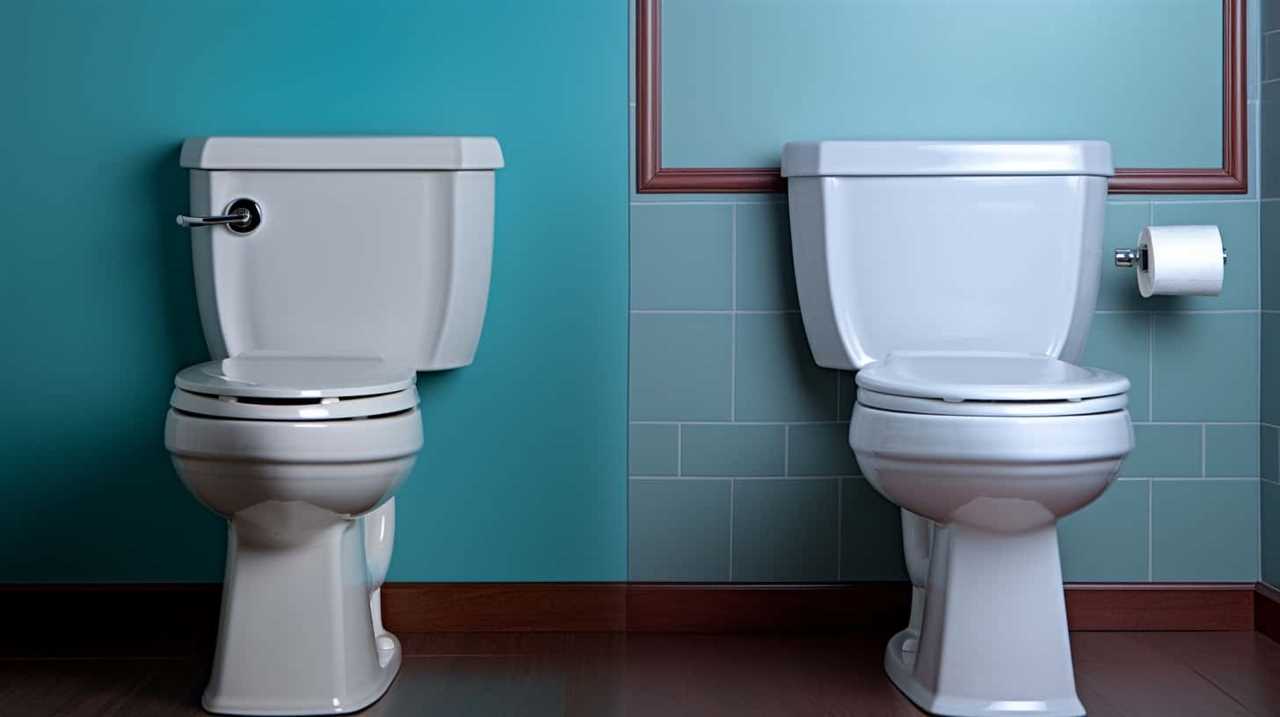
Ever found yourself dealing with the nightmare of a toilet overflowing? No need to worry! We’re here to help.
In this article, we will guide you through the steps to unblock an overflow toilet like a pro. From understanding the cause to gathering the necessary tools, we’ll provide you with the knowledge and techniques to tackle this common household issue.
So let’s roll up our sleeves and get started on mastering the art of unblocking an overflow toilet!
Key Takeaways
- Assess the potential blockage in the pipes and use appropriate tools like a plunger or toilet auger to dislodge the clog.
- Turn off the water supply and protect the floor and surroundings to minimize water damage and prevent mess.
- Use a plunger or toilet auger to unclog the toilet, with a toilet auger being more effective for stubborn clogs.
- Consider the benefits of a toilet auger or snake, such as reaching deeper into the drain pipe, preventing future clogs, and offering better results in unblocking an overflow toilet.
Understand the Cause
To understand the cause of an overflow toilet, we need to assess the potential blockage in the pipes. This can be accomplished by using a few essential tools.

Firstly, a plunger is a handy tool for dislodging minor blockages. It creates pressure and suction to break up the obstruction and restore proper flow.
Additionally, a toilet auger, also known as a snake, can be employed to reach deeper clogs. This flexible metal wire is inserted into the toilet drain and cranked to break up and remove the blockage.
Understanding the common causes of toilet overflow is crucial for preventing future incidents. Some common culprits include excessive toilet paper, foreign objects, and mineral buildup.
Gather the Necessary Tools
Now, let’s gather the necessary tools to unblock an overflow toilet. To effectively tackle understanding clogs, we must choose the right tools. Here are four essential items you’ll need:

- Plunger: Opt for a toilet plunger with a flange, which provides a better seal around the drain. This will help create the necessary pressure to dislodge the clog.
- Toilet auger: Also known as a plumbing snake, this tool is ideal for more stubborn clogs. Insert the auger into the drain and rotate the handle to break up the blockage.
- Rubber gloves: Protect your hands from germs and bacteria by wearing rubber gloves. They’ll also come in handy when handling any unpleasant mess.
- Bucket: Have a bucket nearby to catch any excess water that may overflow during the unclogging process. This will help prevent further mess and damage.
Turn Off the Water Supply
How can we ensure the water doesn’t continue to overflow from the toilet?
One of the first steps to take is to turn off the water supply. Understanding clogs and common toilet problems can help us troubleshoot the situation effectively. To turn off the water supply, locate the shut-off valve, typically situated on the wall behind the toilet. Rotate the valve clockwise until it’s fully closed. This will stop the flow of water into the toilet tank, preventing further overflow.
It’s important to act quickly when facing an overflowing toilet to minimize water damage. By turning off the water supply, we can halt the overflow and focus on resolving the underlying issue causing the clog.
Protect the Floor and Surroundings
We frequently protect the floor and surroundings when dealing with an overflow toilet. Taking preventive measures can save us from unnecessary cleanup and damage. Here are four essential steps to ensure the floor and surroundings remain unscathed:

- Lay down towels or old newspapers around the toilet to absorb any spillage and prevent it from spreading.
- Use plastic sheets or garbage bags to cover the floor, creating a barrier that prevents water from seeping through.
- Place a bucket or basin next to the toilet to catch any excess water that may overflow.
- Remove any nearby objects or furniture that could be damaged by water or hinder our ability to access the toilet.
By following these steps, we can minimize the mess and protect our surroundings.
Now, let’s move on to the next step and learn how to use a plunger to unblock an overflow toilet.
Use a Plunger
To start unblocking an overflow toilet, gather a plunger and position it over the drain. Using a plunger is one of the most common and effective methods of addressing common toilet problems.
First, ensure that there’s enough water in the bowl to cover the plunger’s rubber cup. If not, add water until the cup is submerged. Then, firmly press the plunger down and pull up quickly, creating suction. Repeat this plunging motion several times, increasing the intensity with each plunge.

The suction created by the plunger will help dislodge the blockage and restore proper flow.
If plunging doesn’t resolve the issue, it may be necessary to try a toilet auger for more stubborn clogs.
Try a Toilet Auger
Now let’s talk about using a toilet auger as an alternative to a plunger.
The main advantage of using an auger is its ability to reach deeper blockages that a plunger mightn’t be able to handle.
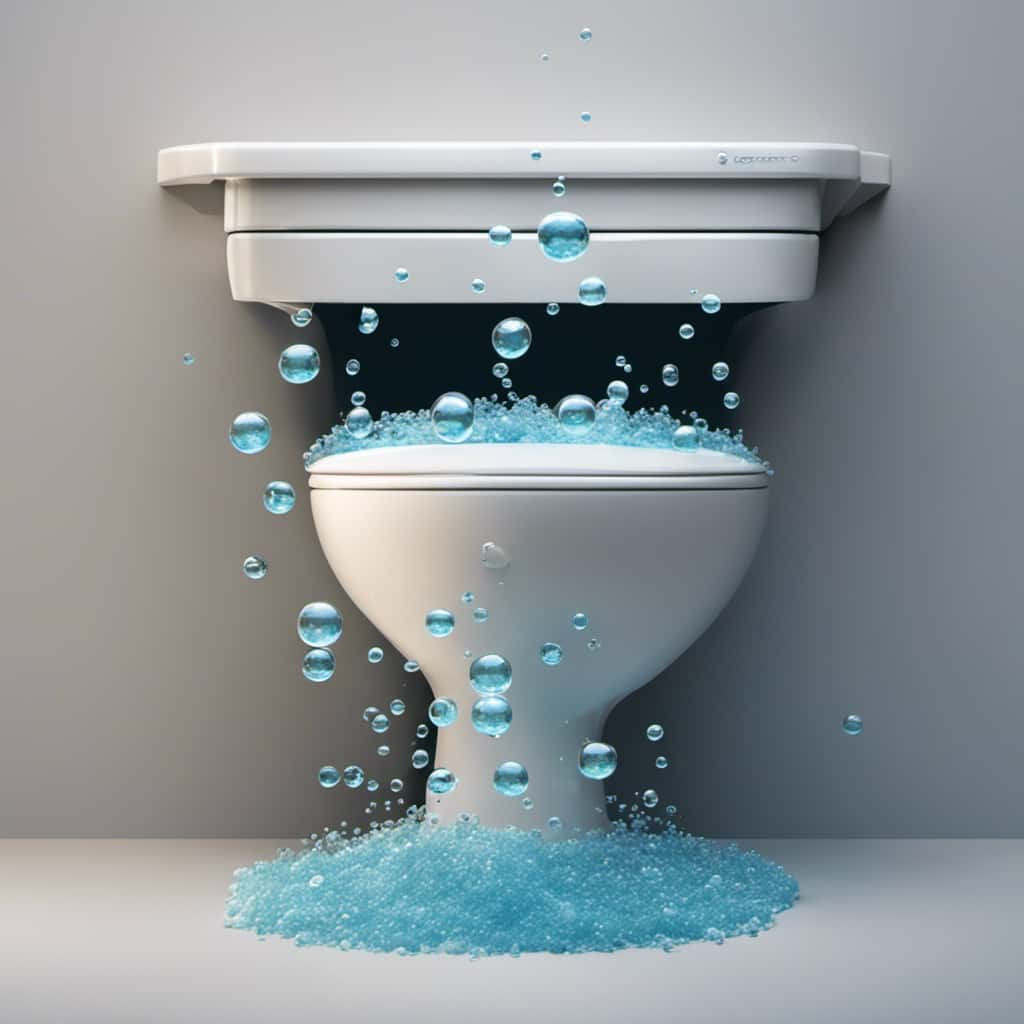
To use a toilet auger, simply insert it into the toilet bowl, rotate the handle, and apply gentle pressure to dislodge any obstructions.
However, it’s important to follow proper usage techniques and take safety precautions to avoid causing damage to the toilet or injuring yourself.
Auger Vs Plunger
When unblocking an overflow toilet, it’s advisable to try a toilet auger instead of a plunger. Here’s why:
- Auger effectiveness: A toilet auger, also known as a plumbing snake, is specifically designed to tackle tough clogs. Its long, flexible cable can reach deeper into the drain pipe, allowing it to break up and remove stubborn blockages that a plunger might struggle with.
- Plunger technique: While plungers are effective for minor clogs, they rely on pressure and suction to dislodge the blockage. However, they may not be as effective for larger or more stubborn clogs. Additionally, improper plunging technique can lead to mess and potential damage to the toilet.
- Cleared pathways: The auger’s cable can navigate through the U-bend and other curves in the toilet’s plumbing system, ensuring a thorough cleaning and clearing of the pathway.
- Prevention of future clogs: By using a toilet auger, you can remove the entire obstruction, minimizing the chances of future clogs and keeping your toilet running smoothly.
When faced with a challenging clog, consider using a toilet auger for its effectiveness, ability to clear pathways, and prevention of future clogs.
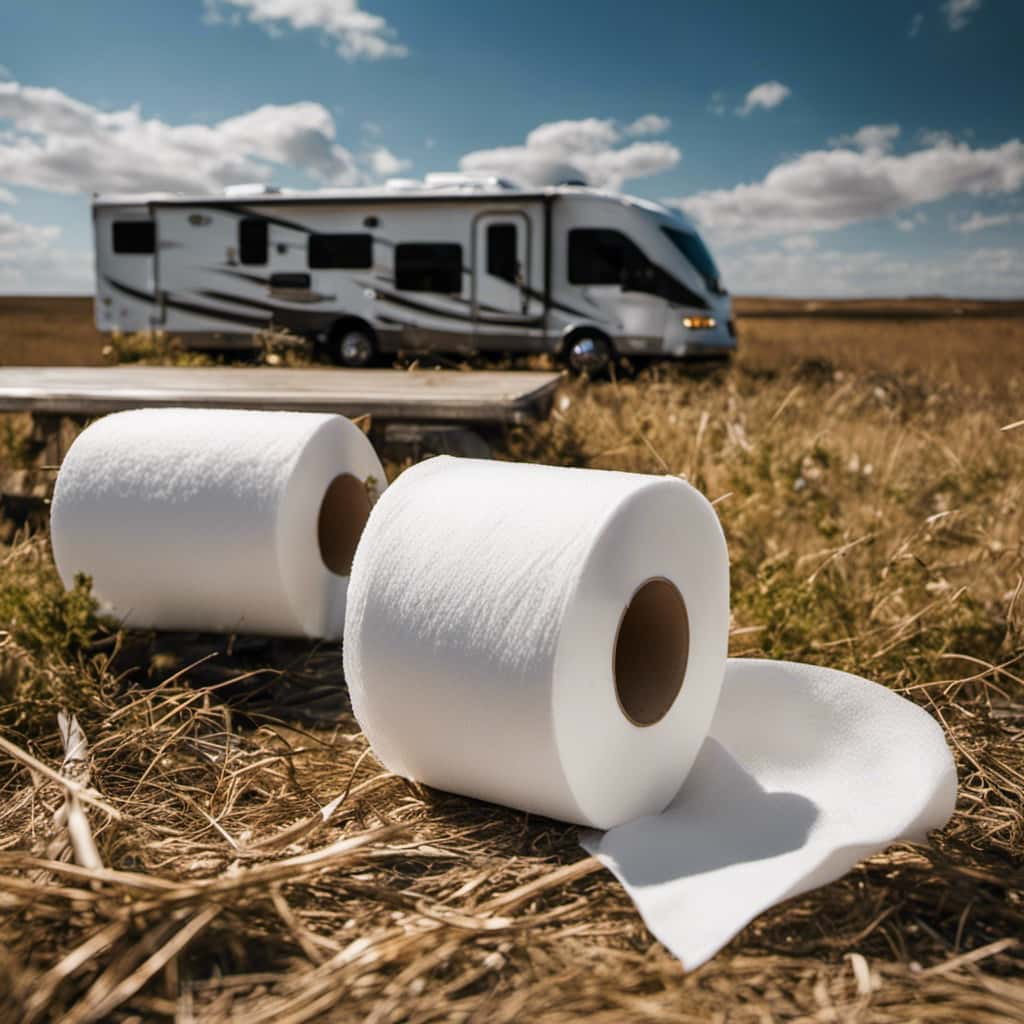
Proper Auger Usage
After discussing the benefits of using a toilet auger instead of a plunger, let’s now delve into the proper usage of a toilet auger.
When it comes to unclogging a toilet, a toilet auger is a reliable tool that can effectively clear blockages. Unlike a plunger, which can sometimes push the clog further down the drain, a toilet auger is designed to break up the clog and remove it completely.
To use a toilet auger, start by inserting the flexible cable into the drain hole. Then, turn the handle clockwise to feed the cable into the pipe. Once you feel resistance, continue turning the handle while applying gentle pressure to break up the clog. Avoid using excessive force, as it may damage the pipes.
As an alternative to using a toilet auger, there are also DIY unclogging methods that you can try, such as using a combination of hot water and dish soap or a mixture of baking soda and vinegar. These methods may work for minor clogs, but for more stubborn blockages, a toilet auger is the recommended tool to ensure thorough unclogging.

Safety Precautions
Let’s talk about the safety precautions we should take when using a toilet auger to unblock an overflow toilet.
To ensure a safe and effective unclogging process, it’s important to follow these guidelines:
- Protective Gear: Before starting, put on rubber gloves and safety goggles to shield yourself from potential splashes and debris.
- Secure the Area: Clear the surrounding area to prevent any obstacles that may hinder your movements while using the auger.
- Follow Instructions: Familiarize yourself with the manufacturer’s instructions for using the toilet auger properly. This will help you avoid any accidental damage to the toilet or injury to yourself.
- Be Gentle: When inserting the auger into the toilet, apply gentle pressure to avoid causing further damage. Slowly rotate the auger handle to break up the clog without exerting excessive force.
Use a Toilet Snake
When it comes to unclogging an overflow toilet, using a toilet snake can be a viable option.
The toilet snake is a tool designed to break up and remove clogs that a plunger mightn’t be able to handle.

It’s a cost-effective DIY solution that can save you time and money, especially when compared to calling a professional plumber.
Snake Vs Plunger
We prefer using a toilet snake over a plunger to unblock an overflow toilet. Here are the reasons why:
- Flexibility: A toilet snake is flexible and can navigate through the curves of the toilet drain, reaching the clog more effectively than a plunger.
- Mechanical Advantage: A toilet snake provides a mechanical advantage by allowing you to apply direct force on the clog, breaking it up and clearing the blockage.
- Versatility: Toilet snakes come in various lengths, allowing you to choose the right size for your toilet. They can also be used for other plumbing tasks, such as removing clogs from sinks or showers.
- Less Mess: When using a plunger, there’s a risk of splashing dirty water around the bathroom. With a toilet snake, you can avoid this mess and keep your bathroom clean.
While plunger alternatives have their pros and cons, a toilet snake offers more precision and effectiveness in unblocking an overflow toilet.
Professional Vs DIY
To unblock an overflow toilet, we recommend considering the option of using a toilet snake either by a professional or through a DIY approach. When it comes to unblocking a toilet, using a toilet snake can be an effective method. However, there are pros and cons to both the professional and DIY approaches.
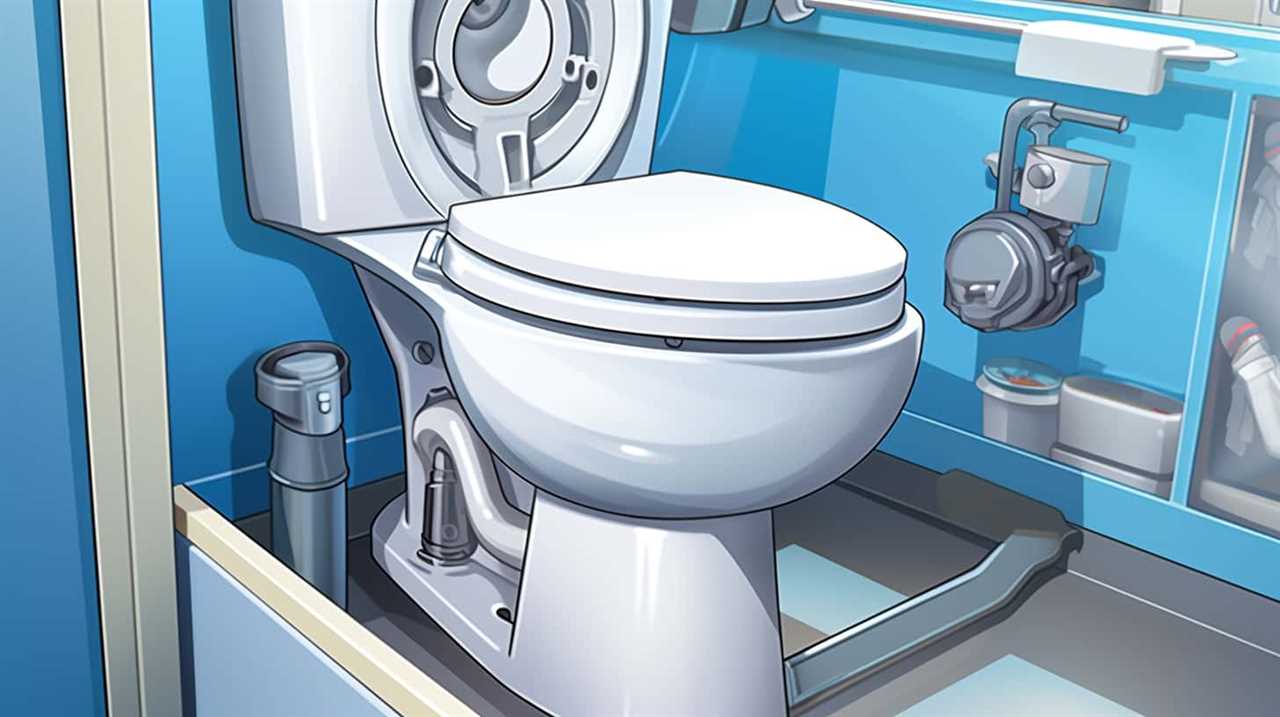
Hiring a professional plumber ensures that the job is done correctly and efficiently. They’ve the expertise and specialized tools to handle any blockage effectively. Additionally, professionals can identify and address any underlying issues that may have caused the blockage. On the downside, professional services can be costly and may require scheduling an appointment, which could lead to a longer wait time.
On the other hand, taking a DIY approach can be cost-effective and convenient. Using a toilet snake yourself allows you to address the blockage promptly without relying on external help. However, it requires some knowledge and skill to use the tool correctly, as improper usage can damage the toilet or worsen the blockage.
Ultimately, the decision between professional and DIY methods depends on your comfort level, budget, and the severity of the blockage.
Use Baking Soda and Vinegar
To unblock an overflow toilet, one effective method is by utilizing a combination of baking soda and vinegar. This natural and cost-effective solution is commonly used by DIY enthusiasts.

Here’s how it works:
- Pour half a cup of baking soda into the toilet bowl. Baking soda has numerous benefits, including its ability to break down organic matter and neutralize odors.
- Slowly pour one cup of vinegar into the bowl. Vinegar is a great alternative to harsh chemicals, as it acts as a natural disinfectant while also breaking down stubborn clogs.
- Let the mixture sit for about 30 minutes. During this time, the chemical reaction between the baking soda and vinegar will create fizzing and bubbling, which helps to loosen and dissolve the blockage.
- Finally, flush the toilet to see if the clog has cleared. If not, repeat the process or consider calling a professional plumber.
Using baking soda and vinegar is a simple and effective method for unblocking an overflow toilet, providing you with the knowledge and mastery to handle this issue yourself.
Use Hot Water and Dish Soap
Another method to unblock an overflow toilet, continuing from the previous subtopic, is by using hot water and dish soap. This method is effective in breaking up toilet clogs and preventing future blockages.
To begin, heat a pot of water on the stove until it’s hot, but not boiling. Next, add a generous amount of dish soap to the toilet bowl. The soap acts as a lubricant, making it easier for the clog to slide through the pipes.
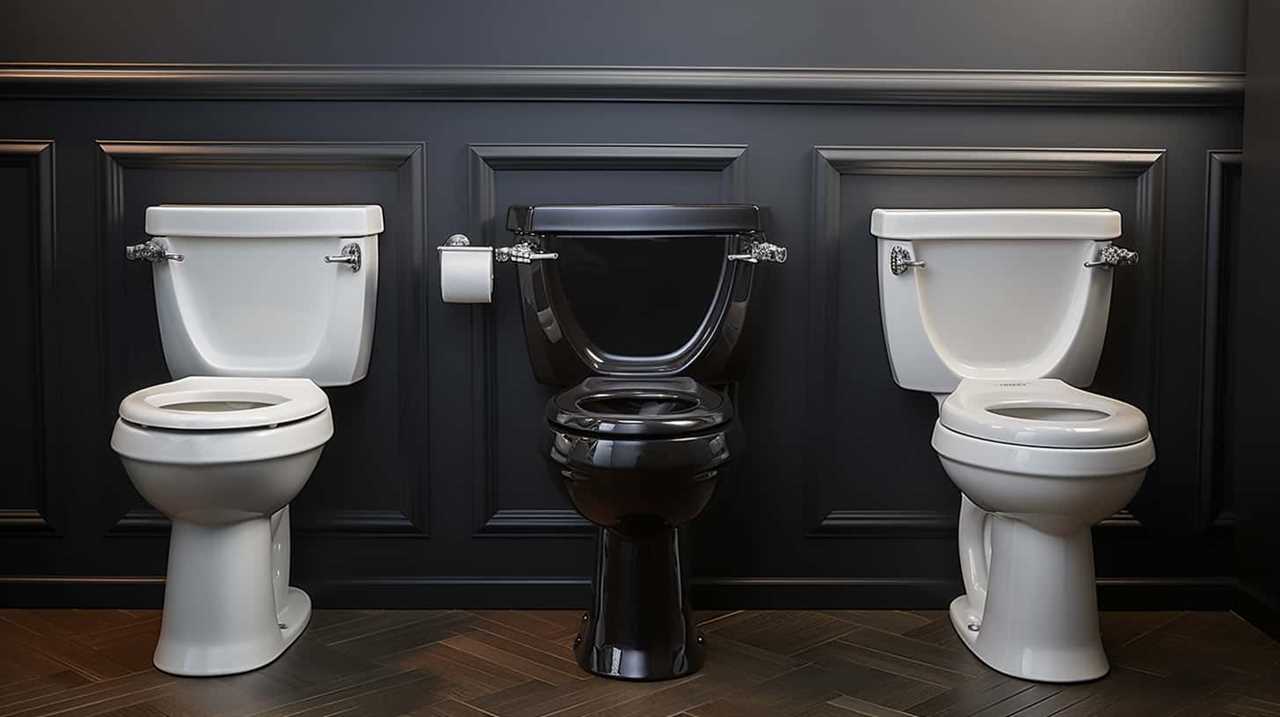
Carefully pour the hot water into the toilet bowl, aiming for the drain. The hot water will help soften and dissolve the clog, allowing it to be flushed away.
This alternative toilet unclogging method is a simple and cost-effective solution that can be used in conjunction with other methods for stubborn clogs.
Transitioning to the next section, if hot water and dish soap don’t work, you may want to try a chemical drain cleaner.
Try a Chemical Drain Cleaner
Using hot water and dish soap may not always be effective in unblocking an overflow toilet, so a potential alternative to consider is trying a chemical drain cleaner.
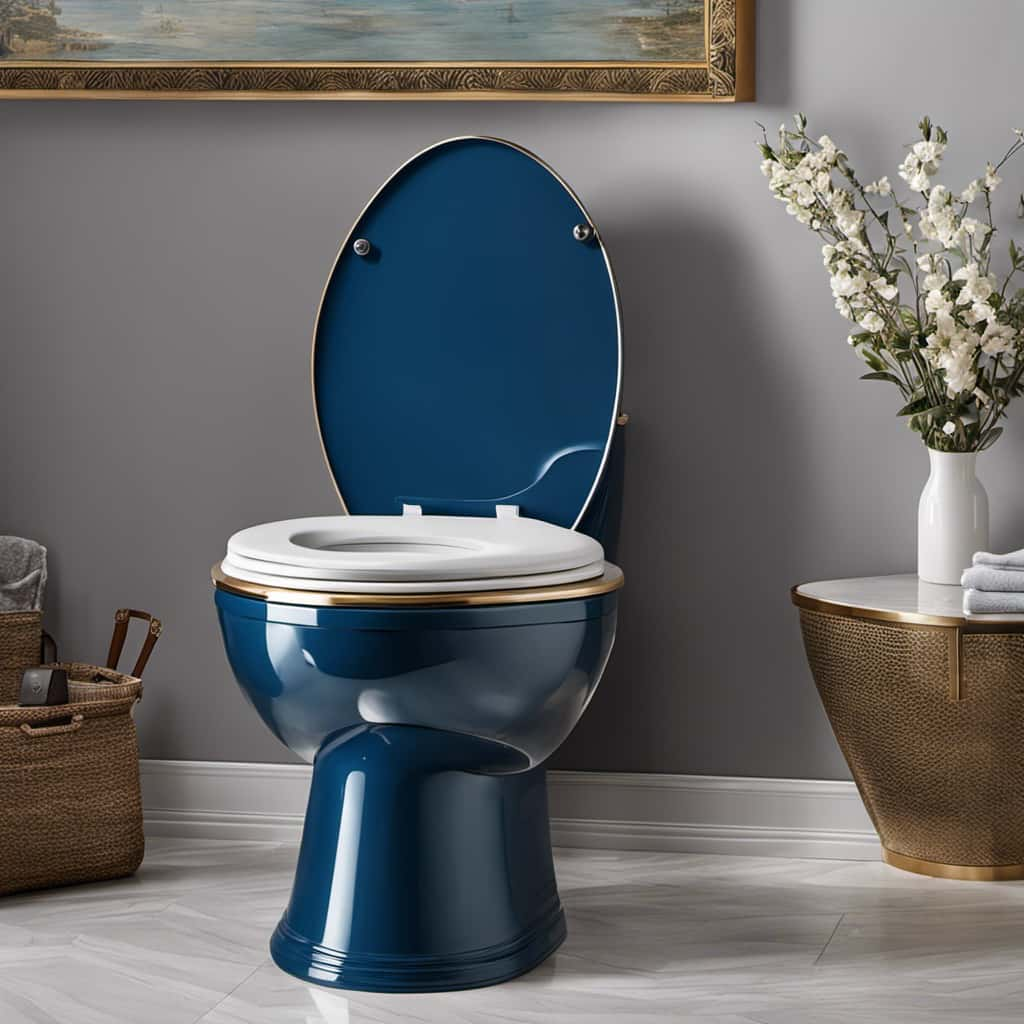
When using a chemical drain cleaner, there are a few key steps to follow for optimal results:
- Read the instructions: Before using any drain cleaner, carefully read and follow the instructions provided. Different products have varying application methods and safety precautions.
- Choose the right product: Look for a drain cleaner specifically designed for toilets. These cleaners are formulated to break down and dissolve common blockages, such as toilet paper and waste.
- Protect yourself: Wear protective gloves and goggles while handling the chemical drain cleaner to prevent any irritation or burns. Ensure proper ventilation in the bathroom by opening windows or using a fan.
- Follow the recommended dosage: Use the appropriate amount of drain cleaner as directed. Excessive use can damage your plumbing system and lead to further issues.
Use a Wet/Dry Vacuum
After choosing the right product and protecting ourselves, we can unblock an overflow toilet by utilizing a wet/dry vacuum.
This method is effective in removing excess water and unclogging the toilet.
To begin, ensure that the vacuum is equipped with a wet/dry attachment to handle the water. Place the attachment securely over the drain opening in the toilet bowl.
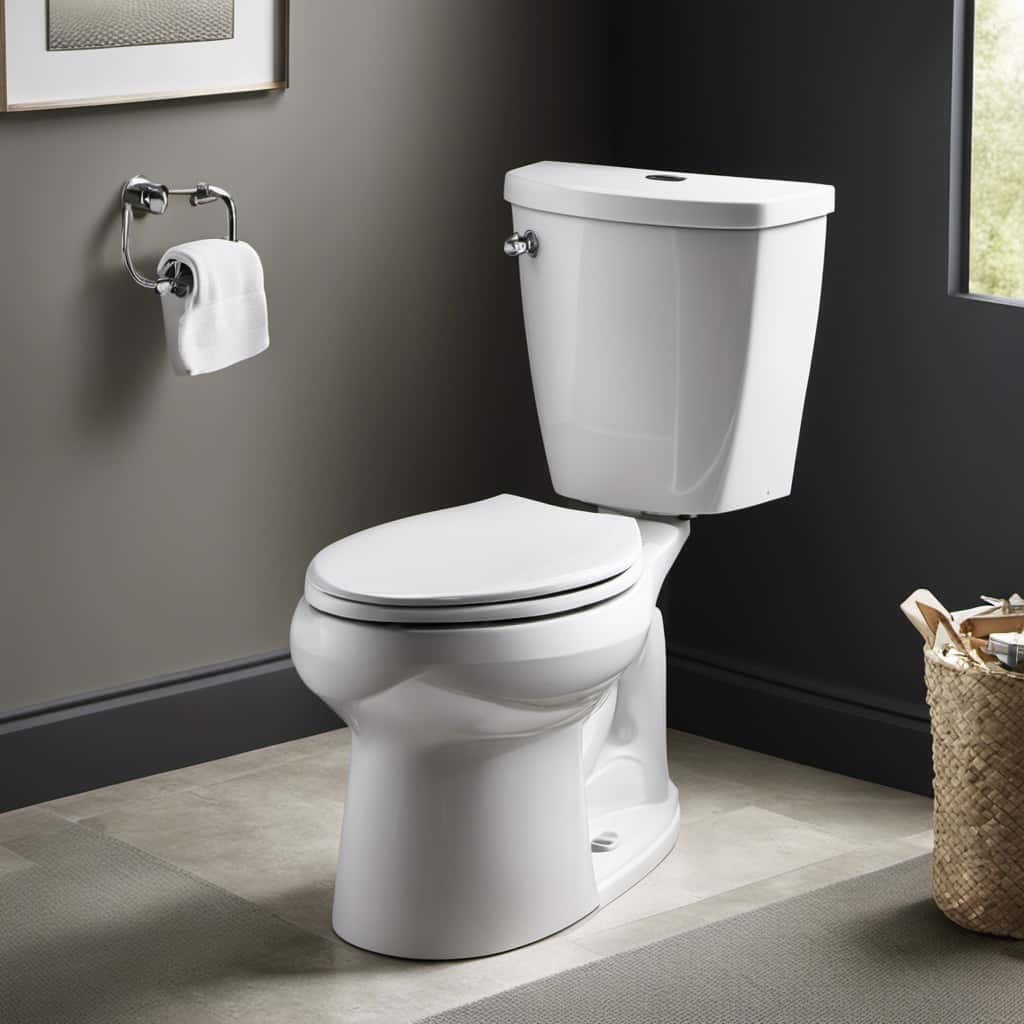
Turn on the vacuum and let it create suction to remove the water and any blockages. Slowly move the attachment around to ensure thorough suction and removal of debris.
Remember to empty the vacuum’s canister as needed to prevent overflow.
In cases where a wet/dry vacuum isn’t available, alternative options include using a plunger or a toilet auger.
However, the wet/dry vacuum provides a more efficient and convenient solution for unblocking an overflow toilet.
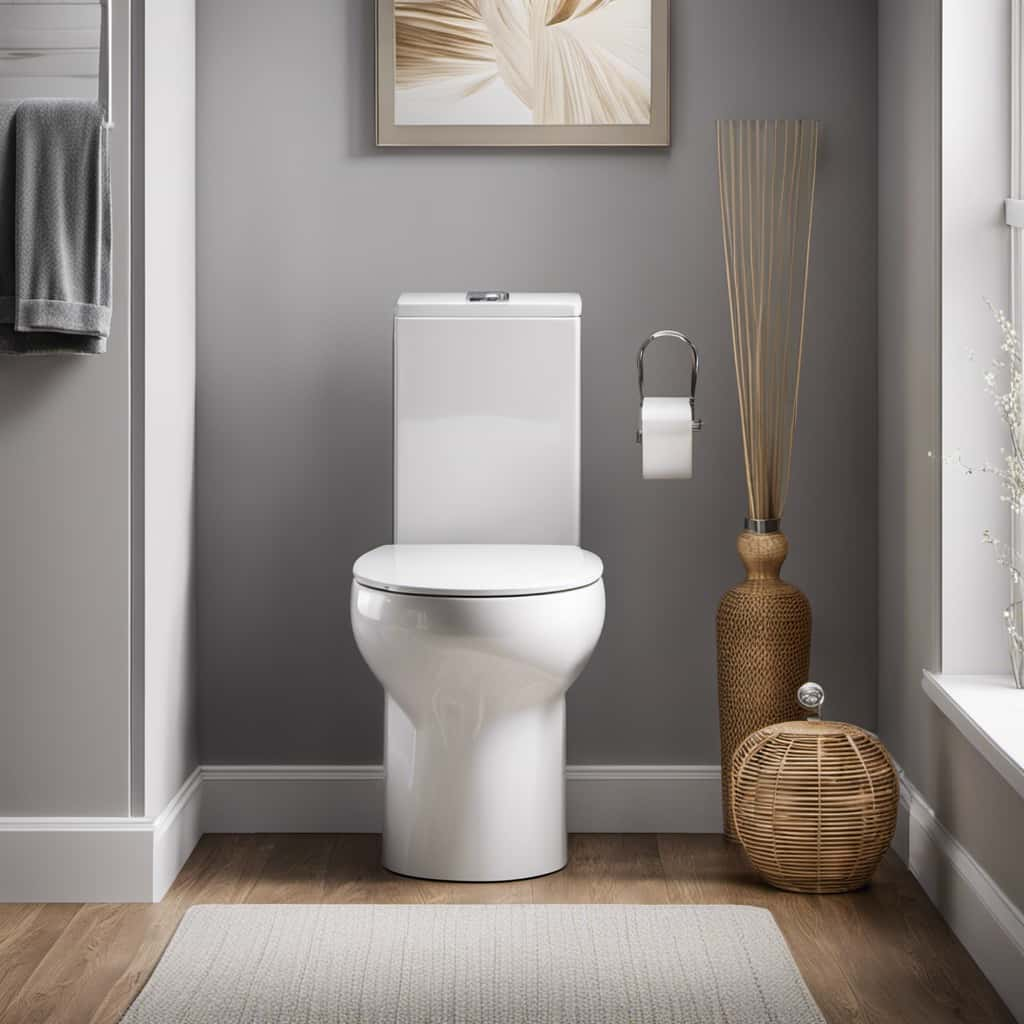
Call a Professional Plumber
When it comes to unblocking an overflow toilet, sometimes it’s best to leave it to the professionals. DIY methods can be effective, but they may not always fully resolve the issue.
Calling a professional plumber ensures that the problem is addressed properly and efficiently, saving you time and potential headaches.
Additionally, hiring a plumber may come with a cost, but it’s important to consider the potential damage and expenses that could arise from a prolonged or mishandled blockage.
DIY Methods for Unblocking
Although it’s recommended to call a professional plumber, we can try DIY methods to unblock an overflow toilet. Here are four toilet unblocking alternatives and natural remedies for clogged toilets:
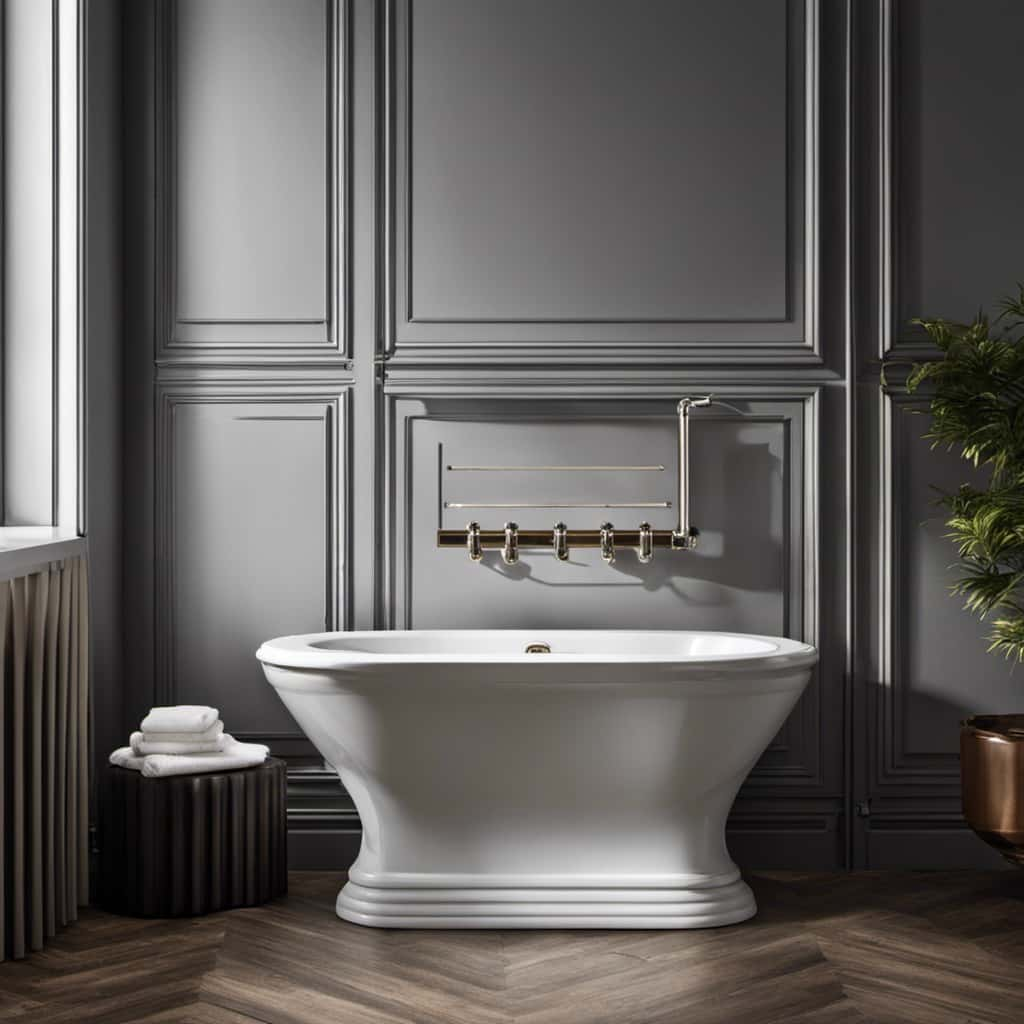
- Plunger: A plunger is a handy tool that uses suction to remove blockages. Place the plunger over the drain hole and push down firmly, then pull up sharply. Repeat this motion a few times to dislodge the clog.
- Hot water and dish soap: Pour a generous amount of dish soap into the toilet bowl, followed by hot water. The soap will help break down the blockage, while the hot water will help flush it away.
- Baking soda and vinegar: Mix equal parts baking soda and vinegar and pour it into the toilet bowl. Let it sit for a few minutes, then flush with hot water. The chemical reaction between the baking soda and vinegar can help dissolve the clog.
- Toilet auger: If the clog is stubborn, a toilet auger can be used. Insert the auger into the drain hole and rotate the handle to break up the blockage.
While these DIY methods may work in some cases, it’s important to know when to call a professional plumber for more severe clogs or underlying issues.
Costs of Hiring Professional
To continue the discussion on unblocking an overflow toilet, let’s explore the costs of hiring a professional plumber.
While DIY alternatives may seem cost-effective at first, it’s important to consider the potential risks and drawbacks. Hiring a professional plumber ensures that the job is done efficiently and effectively, reducing the chances of further damage or complications.
The cost of hiring a plumber can vary depending on factors such as the severity of the blockage, the location, and the plumber’s expertise. However, it’s essential to weigh the cost against the expertise and peace of mind that comes with professional assistance.
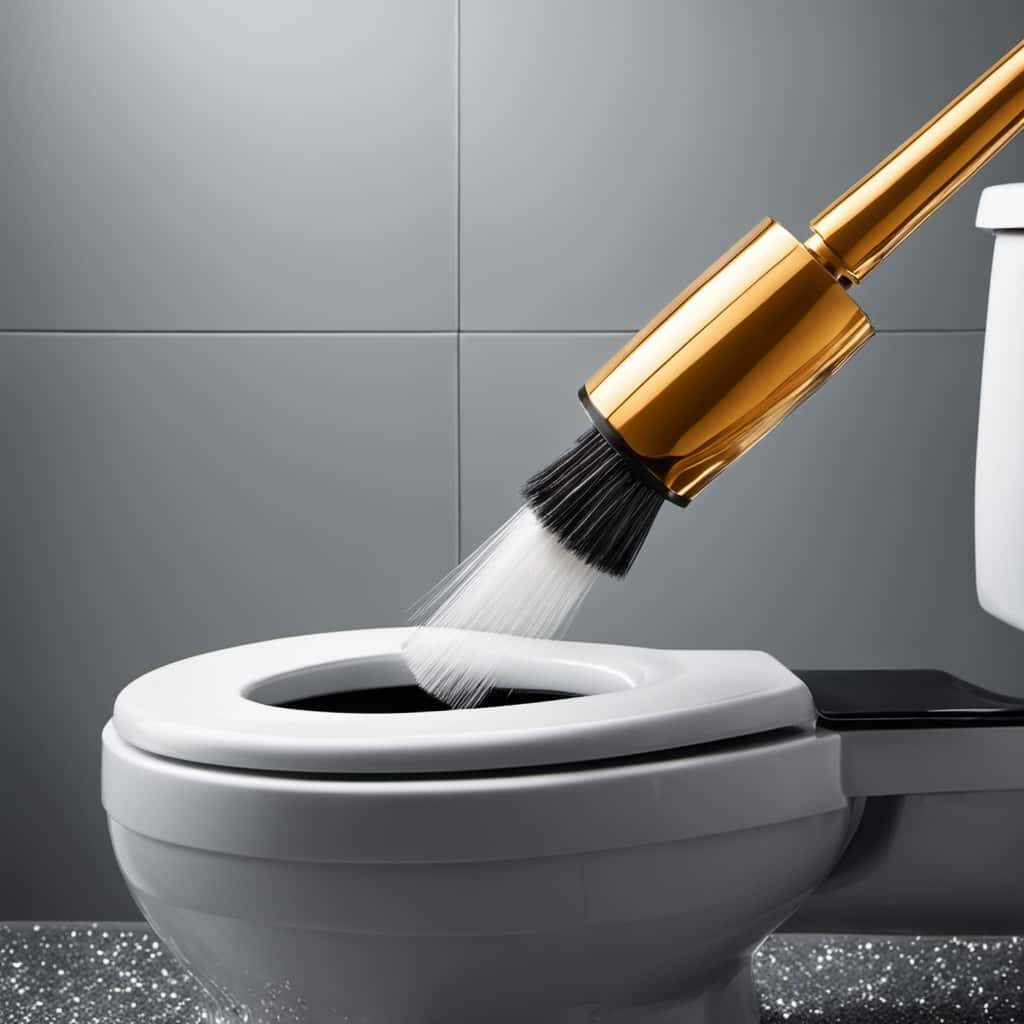
In some cases, attempting DIY methods can actually end up costing more if mistakes are made and additional repairs are required.
Now that we understand the costs involved, let’s move on to discussing the importance of quick action when dealing with an overflow toilet.
Importance of Quick Action
Now let’s delve into the importance of taking swift action and calling a professional plumber when faced with an overflow toilet. A quick response is crucial to prevent further damage and minimize the risk of water damage to your home. Here’s why calling a professional plumber is essential:
- Expertise: Professional plumbers have the knowledge and experience to quickly identify the cause of the overflow and take appropriate action.
- Specialized Equipment: Plumbers have specialized tools, such as drain snakes and hydro-jetting equipment, that can effectively clear clogs and restore proper flow.
- Safety: Handling an overflowing toilet can be hazardous due to the potential for exposure to bacteria and sewage. A professional plumber will have the necessary protective gear to ensure their safety and prevent contamination.
- Prevention Measures: In addition to resolving the immediate issue, a professional plumber can provide valuable advice on how to prevent future toilet overflows, such as regular maintenance and proper usage of the toilet.
Prevent Future Toilet Overflows
One way we can prevent future toilet overflows is by regularly inspecting and maintaining the plumbing system. Preventing clogs and ensuring proper toilet maintenance are essential to avoid potential overflow issues.

To prevent clogs, it’s important to be mindful of what’s being flushed down the toilet. Avoid flushing items such as hygiene products, wipes, or excessive amounts of toilet paper, as these can easily cause blockages.
Additionally, regular maintenance should include checking the water level in the tank to ensure it’s at the appropriate level and inspecting the flushing mechanism for any signs of damage or wear. Regularly cleaning the toilet bowl and drains can also help prevent clogs and maintain optimal flow.
Clean Up and Disinfect
After preventing future toilet overflows by regularly inspecting and maintaining the plumbing system, we can now shift our focus to the important task of cleaning up and disinfecting the affected area.
To ensure a thorough and effective cleanup, follow these cleaning techniques:

- Start by wearing protective gloves and apron to avoid direct contact with any potentially harmful substances.
- Use a plunger to remove any remaining waste from the toilet bowl, ensuring it’s completely clear.
- Clean the affected area using a mixture of warm water and a mild detergent. Scrub the surfaces thoroughly to remove any stains or residue.
- Disinfect the area using an effective disinfectant, such as bleach or a disinfectant spray. Be sure to follow the instructions on the product label for proper use and dilution.
Once the area is clean and disinfected, you can proceed to the next section for a recap and final thoughts on unblocking an overflow toilet.
Recap and Final Thoughts
To recap and conclude, it is essential that we take proactive measures to prevent future toilet overflows and ensure the cleanliness and hygiene of the affected area. By implementing simple preventive strategies, we can avoid the hassle and potential health hazards associated with toilet overflows.
Here are some final thoughts on prevention:
| Prevention Method | Description | Benefits |
|---|---|---|
| Regular Maintenance | Conduct routine inspections and maintenance to identify and fix potential issues before they become major problems. | Minimizes the risk of toilet overflows and reduces the need for repairs. |
| Proper Flushing Techniques | Educate household members on the correct way to flush the toilet, ensuring only waste and toilet paper are flushed. | Prevents blockages and reduces the likelihood of clogs. |
| Avoiding Flushing Non-Flushable Items | Discourage the flushing of non-flushable items such as wipes, feminine hygiene products, and cotton balls. | Prevents blockages and reduces the likelihood of toilet overflows. |
Conclusion
In conclusion, unblocking an overflowing toilet is a common household issue that can be resolved with a few simple steps. Did you know that around 75% of toilet overflows are caused by clogs? By understanding the cause, using the right tools, and taking preventative measures, you can easily tackle this problem.
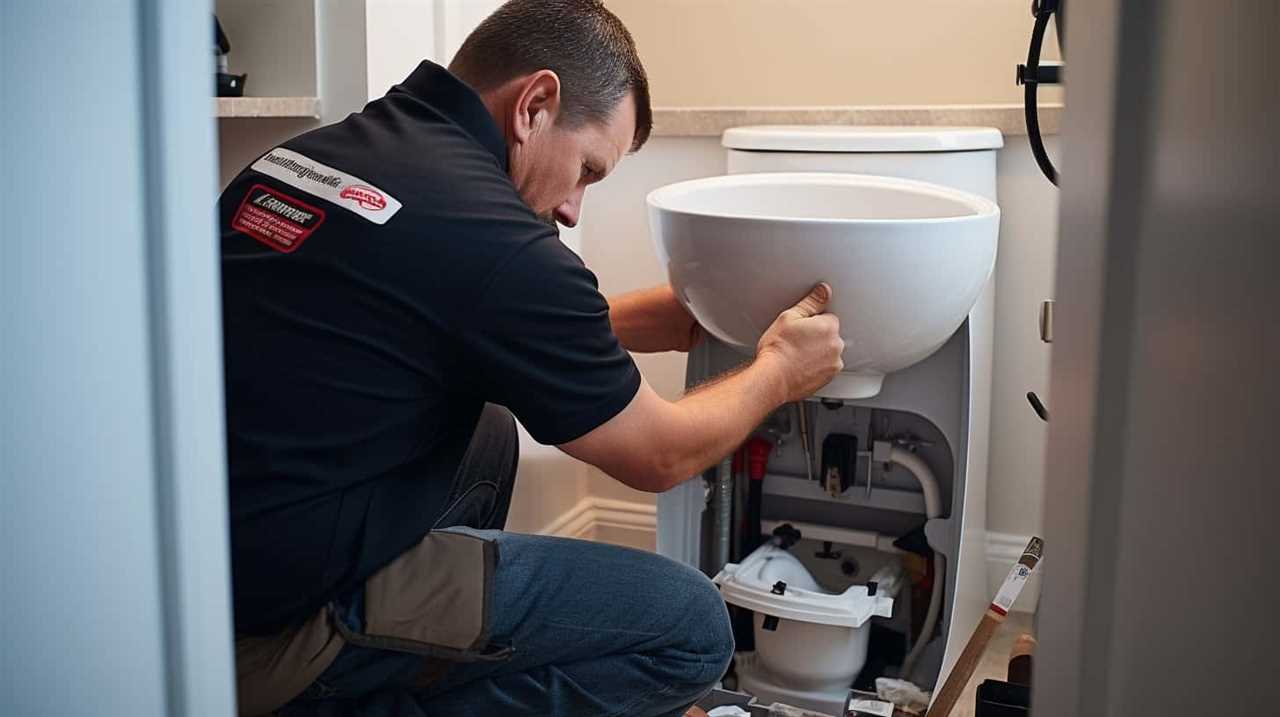
Remember to always turn off the water supply, protect the surrounding area, and consider calling a professional plumber if needed. Keep your toilet clean and well-maintained to prevent future overflows.
With an impeccable eye for detail and a passion for bathroom-related, Ava leads our editorial team gracefully and precisely.
Under her guidance, Best Modern Toilet has flourished as the go-to resource for modern bathroom enthusiasts. In her free time, you might find Ava exploring antique shops and looking for vintage bathroom fixtures to add to her collection.
FAQ - Advanced Bathroom Queries
Cheapest Flushable Cat Litter

We understand your skepticism about discovering the most affordable flushable cat litter. But fret not, cat lovers! We’ve conducted thorough research and put together a detailed guide to assist you in exploring the realm of economical flushable cat litters. Dive in and uncover the secrets to finding the best deal!
From the benefits and factors to consider, to step-by-step transitioning and maintenance tips, we’ve got you covered.
Get ready to master the art of finding affordable flushable cat litter without compromising quality.
Key Takeaways
- Reduces landfill waste
- Contributes to a more sustainable future
- Offers convenience and ease of use
- Saves time and effort in cleaning the litter box
Benefits of Using Flushable Cat Litter
One of the main benefits of using flushable cat litter is that it reduces the amount of waste we’ve to dispose of. This has a significant positive environmental impact as it helps to minimize landfill waste. Traditional cat litter, which isn’t flushable, adds to the already massive amount of non-biodegradable waste in our landfills. Choosing a flushable cat litter allows us to contribute to a more sustainable future.
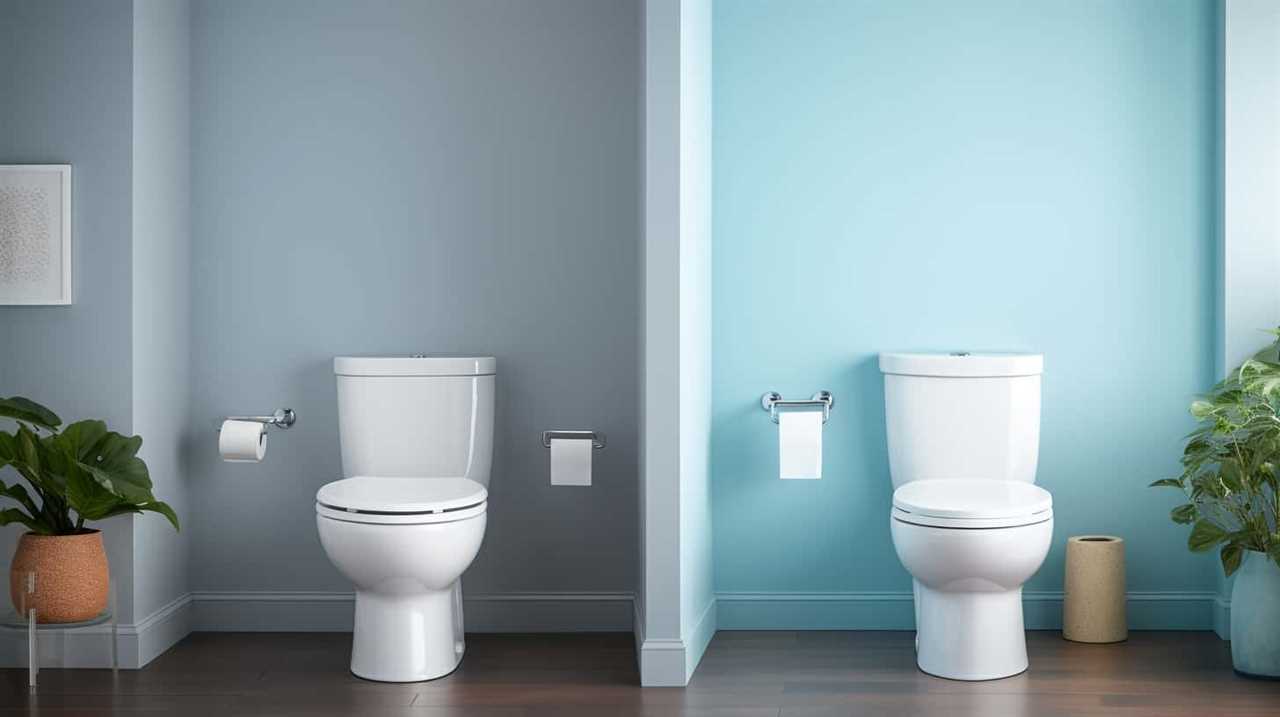
In addition to the environmental benefits, flushable cat litter also offers convenience and ease. Instead of scooping and bagging up the litter box waste, we can simply flush it down the toilet. This saves time and effort, making the process of maintaining a clean litter box much more convenient.
Considering both the environmental impact and the convenience and ease it provides, using flushable cat litter is a smart choice for cat owners. However, it’s important to consider certain factors when choosing the cheapest flushable cat litter.
Factors to Consider When Choosing the Cheapest Flushable Cat Litter
When selecting the cheapest flushable cat litter, there are several factors that we should take into consideration. Here are four key factors to keep in mind:
- Cost-effective options: Look for cat litters that offer the best value for money. Consider the price per pound or per use, as well as any discounts or bulk options available.
- Environmental impact: Opt for cat litters that are biodegradable and made from sustainable materials. This not only reduces waste but also minimizes the impact on the environment.
- Clumping ability: Choose a cat litter that forms strong clumps for easy scooping and cleaning. This ensures efficient use and reduces the frequency of litter box changes.
- Odor control: Look for cat litters that have effective odor control properties. This helps to keep your home smelling fresh and clean, even with a litter box in use.
Considering these factors will help you find the cheapest flushable cat litter that meets your budget, while also being environmentally friendly.

Now, let’s move on to a step-by-step guide on how to transition your cat to flushable litter.
Step-By-Step Guide on How to Transition Your Cat to Flushable Litter
To transition our cat to flushable litter, we found using a gradual approach to be the most effective. The transition process can be stressful for cats, so it’s important to take it slow and be patient.
Start by mixing a small amount of flushable litter with your cat’s current litter, gradually increasing the ratio over time. This allows your cat to become familiar with the new litter while still having the comfort of their old litter.
Additionally, provide alternative options for your cat, such as a separate litter box with their old litter, to ease the transition. Observe your cat’s behavior and adjust the transition pace accordingly.
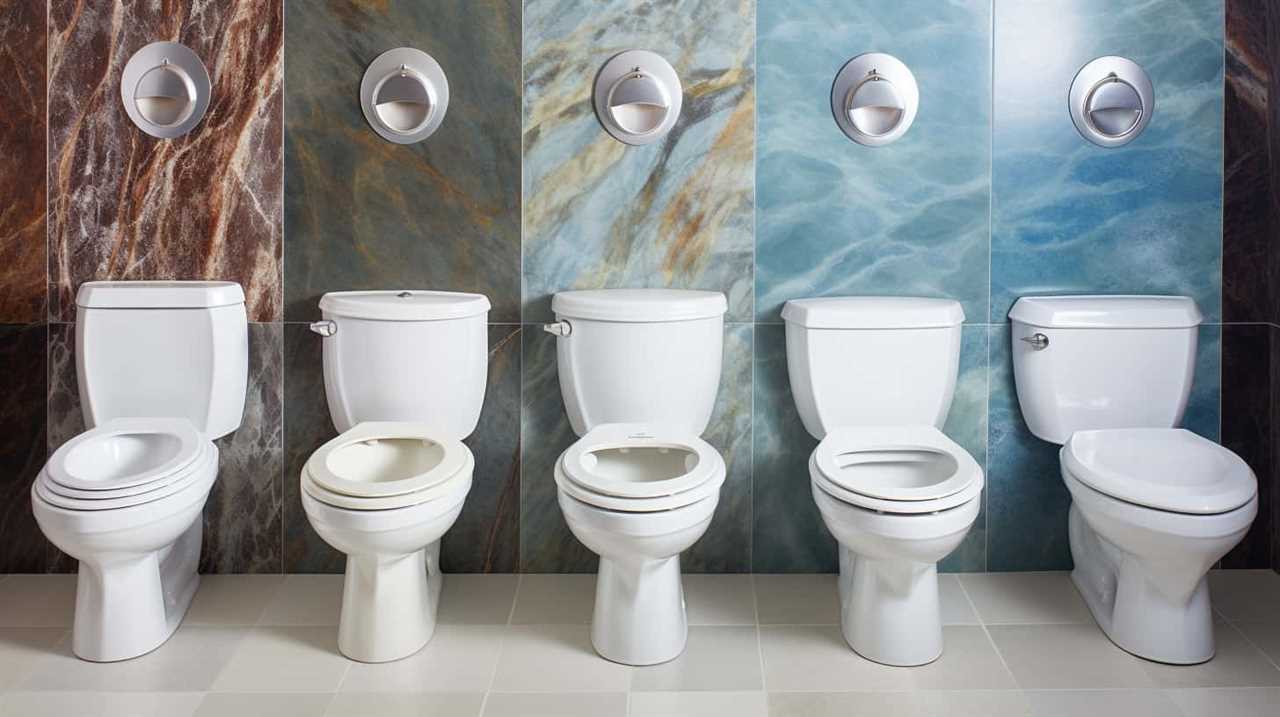
Remember to praise and reward your cat for using the flushable litter to reinforce positive associations. With time and patience, your cat will successfully transition to flushable litter.
Tips for Maintaining a Clean and Odor-Free Litter Box With Flushable Cat Litter
To maintain a clean and odor-free litter box with flushable cat litter, we recommend implementing a regular scooping routine. Here are some tips for reducing litter tracking and properly disposing of flushable cat litter:
- Place a litter mat or tray outside the litter box to catch any litter that may stick to your cat’s paws. This will help prevent it from being tracked around your home.
- Use a litter box with high sides or a covered litter box to contain any litter that may be kicked out during your cat’s digging and burying.
- Scoop the litter box at least once a day to remove any waste and clumps. This will help prevent odor buildup and keep the litter box clean for your cat.
- When disposing of flushable cat litter, make sure to follow the manufacturer’s instructions. Some brands can be safely flushed down the toilet, while others may require bagging and disposing of in the trash.
By following these tips, you can maintain a clean and odor-free litter box with flushable cat litter.
Now, let’s move on to the next section where we’ll provide reviews and recommendations for the top affordable flushable cat litters.
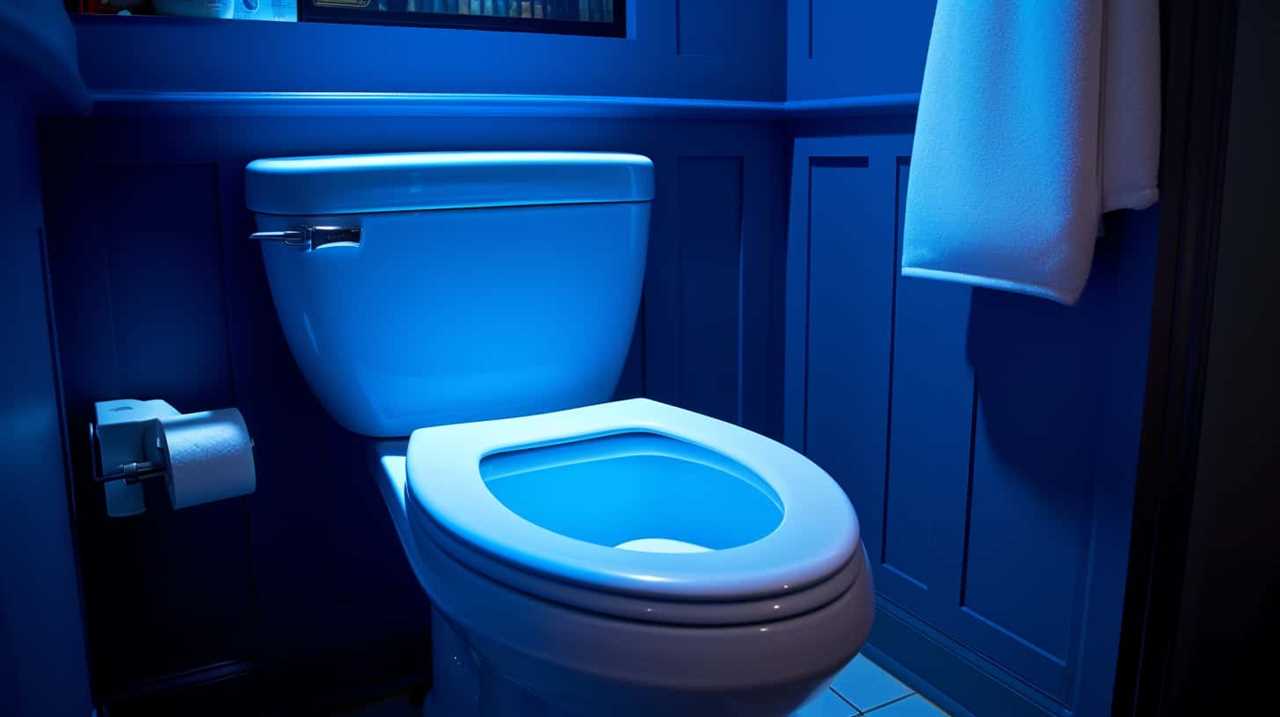
Reviews and Recommendations for the Top Affordable Flushable Cat Litters
Now, let’s dive into our reviews and recommendations for the top affordable flushable cat litters.
When considering flushable cat litters, it’s important to evaluate their environmental impact. The advantage of flushable cat litter lies in its ability to be safely disposed of through the toilet, reducing waste in landfills. However, it’s crucial to choose a litter made from biodegradable materials to ensure minimal impact on the environment.
Additionally, when comparing the cost effectiveness of flushable cat litter with traditional options, it’s essential to consider factors such as lifespan and frequency of litter changes. While flushable cat litter may initially seem more expensive, it can be cost-effective in the long run due to its longer lifespan and reduced waste management costs.
Frequently Asked Questions
Can Flushable Cat Litter Be Used in All Types of Litter Boxes?
Yes, flushable cat litter can be used in all types of litter boxes. However, it is important to consider the pros and cons of using flushable cat litter alternatives before making a decision.

Is Flushable Cat Litter Safe for Septic Systems?
Flushable cat litter may be convenient, but is it safe for septic systems? While it is touted as eco-friendly, the pros and cons should be considered. Is flushable cat litter safe for the environment?
How Often Should I Flush the Litter When Using Flushable Cat Litter?
When using flushable cat litter, we flush it every time our cat uses the litter box. This ensures cleanliness and prevents odors. However, there are alternatives to flushable cat litter that may be more cost-effective.
Can I Mix Flushable Cat Litter With Regular Cat Litter?
When considering mixing cat litter, it’s important to note that flushable and regular litter have different compositions and functionalities. It’s best to avoid mixing them to maintain the effectiveness of flushable litter and explore alternatives to flushable litter instead.
Are There Any Specific Brands of Flushable Cat Litter That Are More Environmentally Friendly?
There are alternative eco-friendly options available when it comes to flushable cat litter. Using flushable litter has several benefits, such as reducing waste and being more environmentally friendly compared to traditional cat litter.
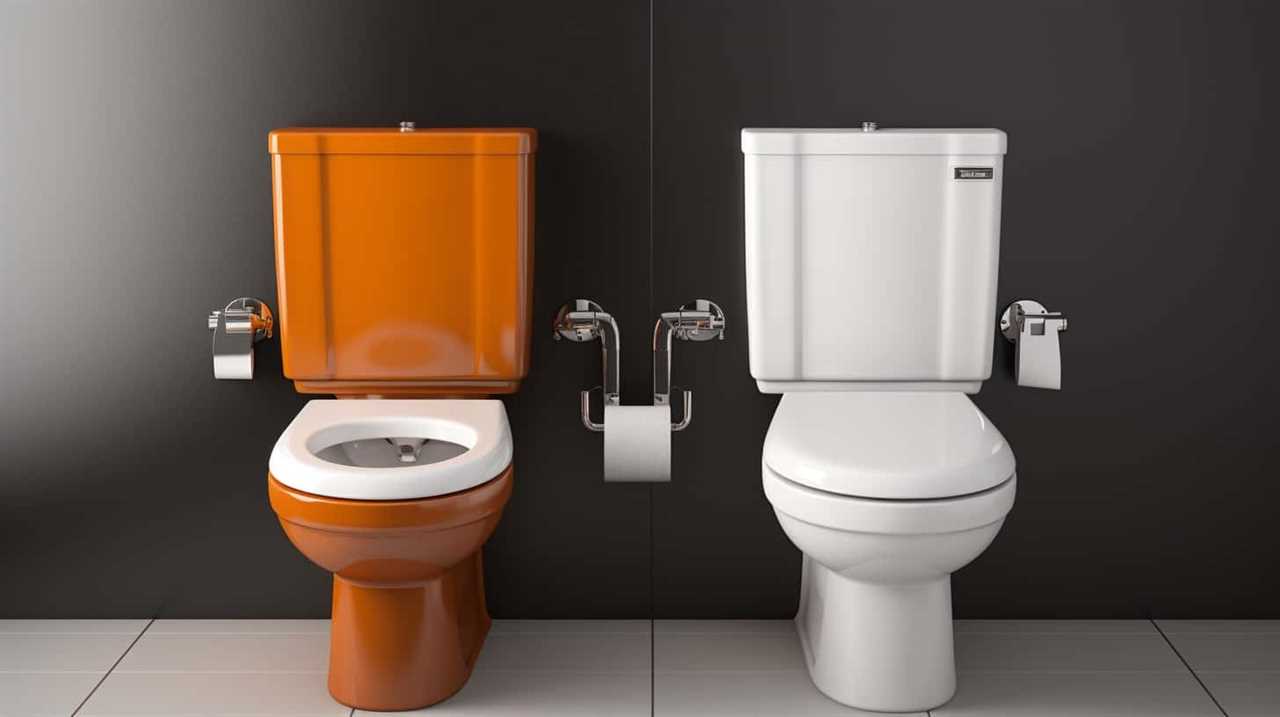
Conclusion
In conclusion, finding the cheapest flushable cat litter can be a game-changer for both you and your feline friend. By considering factors such as cost, effectiveness, and environmental impact, you can make an informed decision.
Transitioning your cat to flushable litter may require patience, but it’s worth it in the long run. With proper maintenance, you can keep your litter box clean and odor-free.
So why not give it a try and experience the convenience and efficiency of flushable cat litter? It’s like finding a hidden treasure for both you and your cat!
With an impeccable eye for detail and a passion for bathroom-related, Ava leads our editorial team gracefully and precisely.
Under her guidance, Best Modern Toilet has flourished as the go-to resource for modern bathroom enthusiasts. In her free time, you might find Ava exploring antique shops and looking for vintage bathroom fixtures to add to her collection.
FAQ - Advanced Bathroom Queries
Can You Force Flush a Toilet
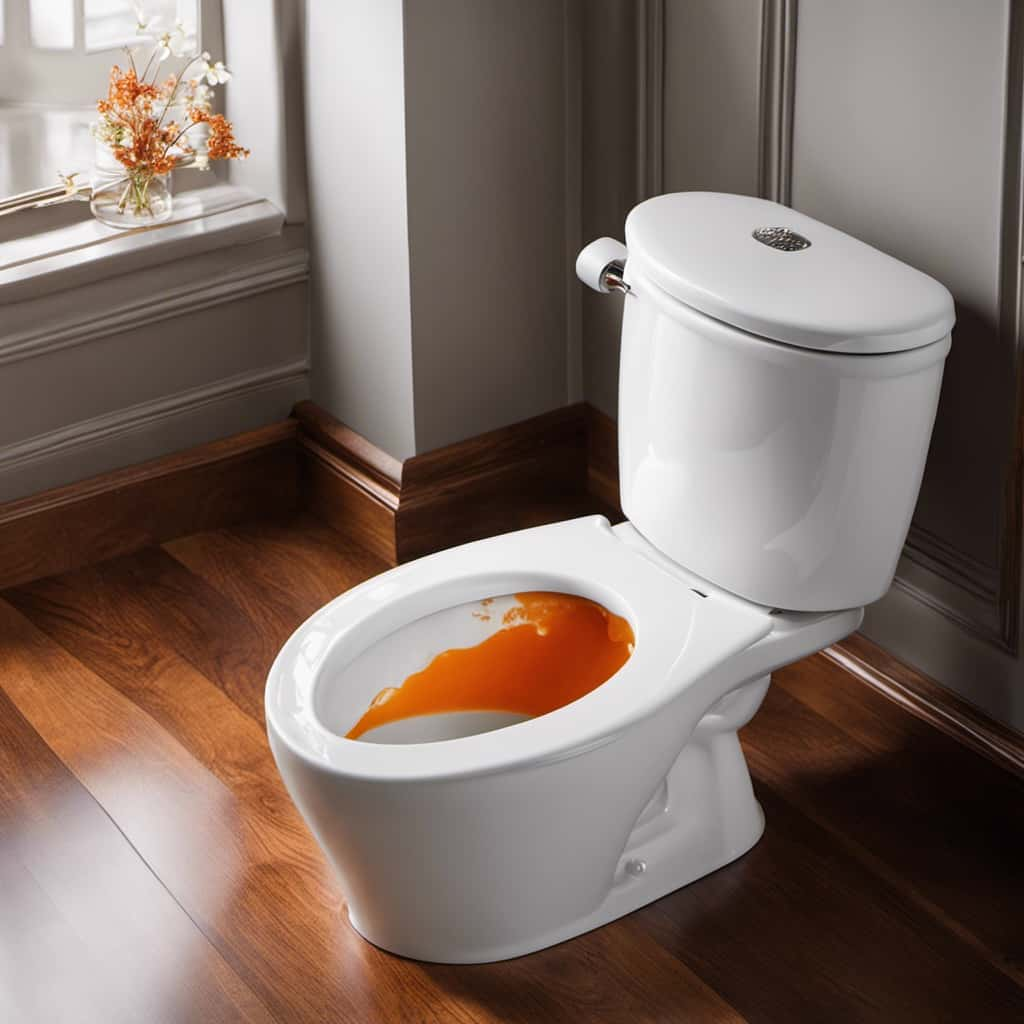
Yes, you can unleash the power of a force flush on your toilet! Have you ever thought about it before? We’re here to let you know that it is possible!
In this article, we will delve into the mechanics of a toilet flush and explain when a force flush is necessary.
We’ll also provide you with a step-by-step guide and tips for a successful force flush.
So, buckle up and get ready to master the art of force flushing your toilet!
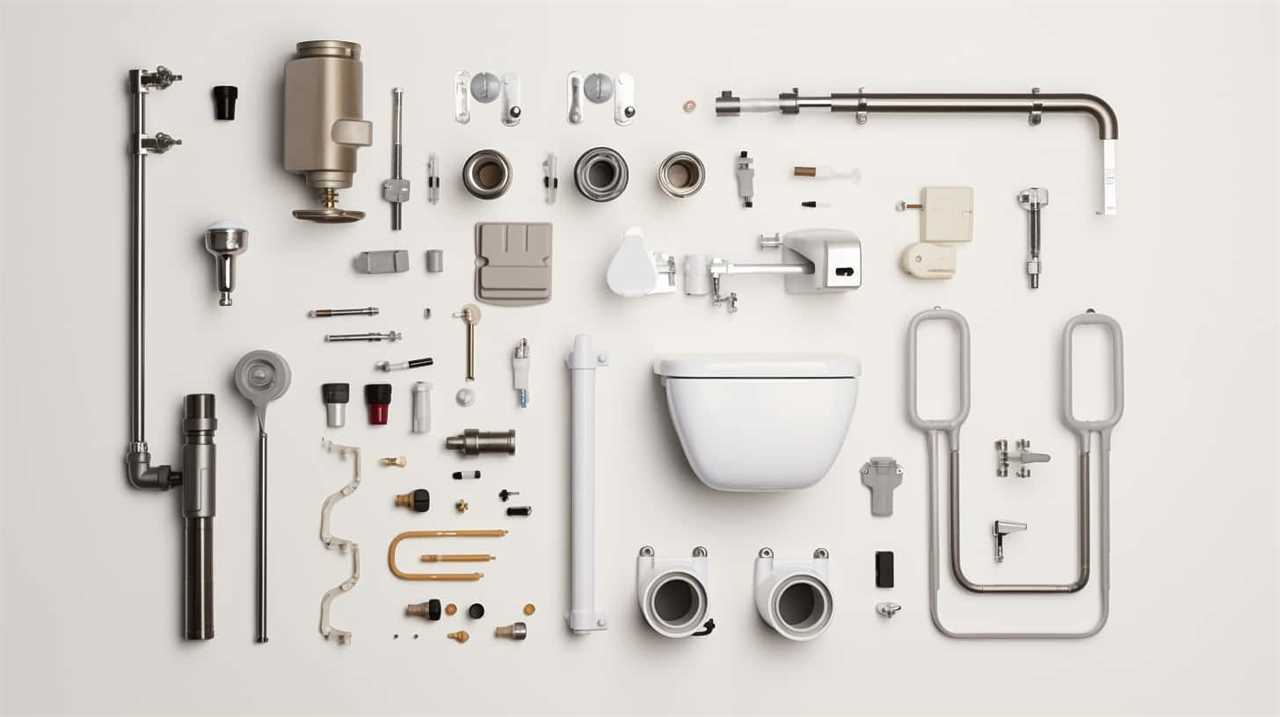
Key Takeaways
- The flush lever lifts the flapper, allowing water to rush into the bowl.
- Troubleshooting weak flushes, inconsistent water levels, or clogs involves checking the water supply, flush valve, and tank components.
- If conventional methods fail to unclog a toilet, calling a professional plumber may be necessary.
- Tools and equipment for force flushing a toilet include a plunger, high-pressure water source, rubber gloves, towels, and a bucket or pail.
Understanding the Mechanics of a Toilet Flush
To understand the mechanics of a toilet flush, we’ll delve into the workings of its water flow and pressure.
The toilet flush mechanism is a complex system that relies on the proper functioning of several components. When the flush lever is pressed, it lifts the flapper, allowing water from the tank to rush into the bowl. This creates a strong force that pushes waste down the drain.
However, if you’re experiencing issues with your toilet flush, troubleshooting the problem can be a bit challenging. Common issues include weak flushes, inconsistent water levels, or clogs.
It’s important to check the water supply, the flush valve, and the tank components for any signs of damage or malfunction. By understanding the inner workings of the toilet flush mechanism, you can effectively troubleshoot and fix any issues that arise.

Identifying When a Force Flush Is Necessary
When identifying the instances in which a force flush is necessary, we must consider the factors that may contribute to a weak or ineffective flush. Signs of a clogged toilet include water that rises to the rim or drains slowly, gurgling sounds, or a foul odor. If these signs persist despite attempts to unclog the toilet using a plunger or other methods, it may be time to call a professional plumber.
A professional plumber has the expertise and tools to effectively diagnose and resolve complex clogs that can’t be cleared through conventional means. Knowing when to call a professional plumber can prevent further damage to your plumbing system and ensure a proper force flush is performed if necessary.
With an understanding of when a force flush is needed, let’s now explore the tools and equipment required for this process.
Tools and Equipment for Force Flushing a Toilet
We will need specific tools and equipment to successfully force flush a toilet. Here are the essential items you’ll need:
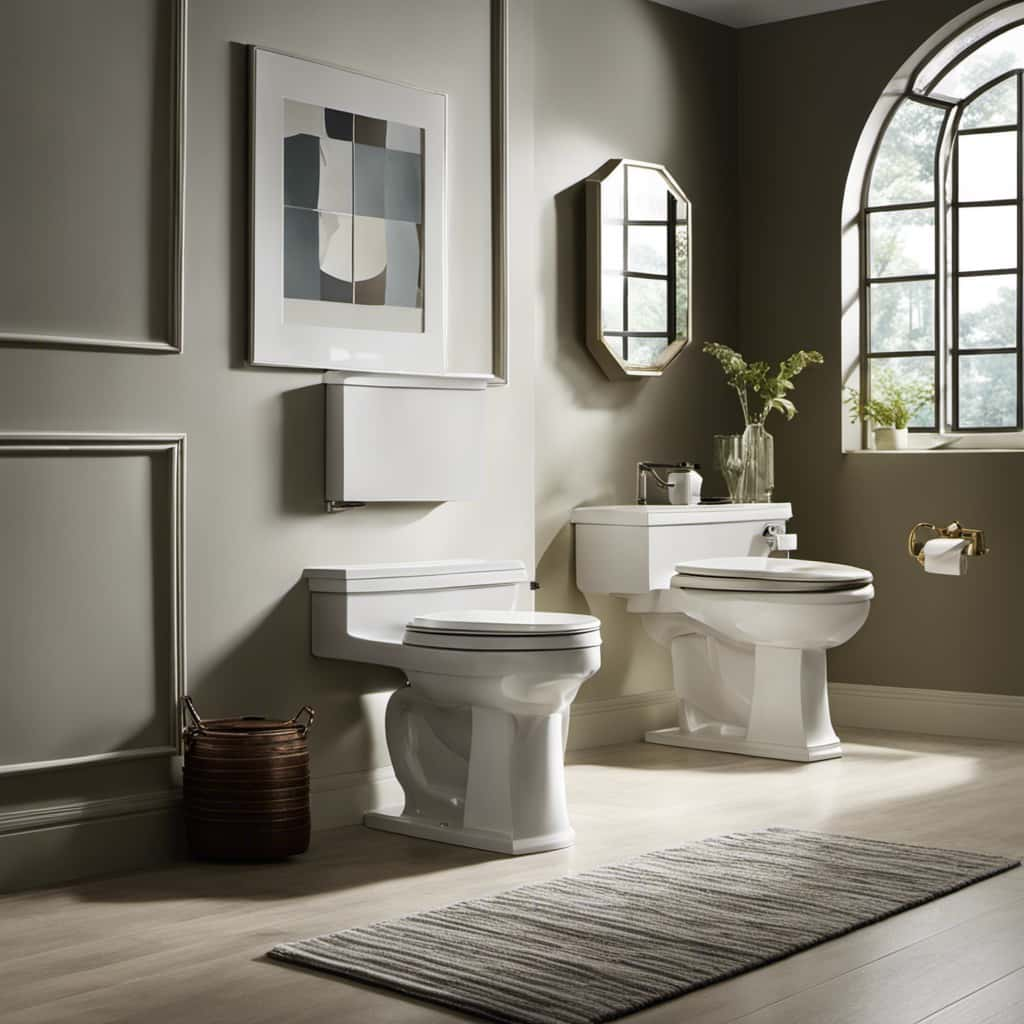
- Plunger: A plunger is a basic tool used to create pressure and force water through the drain. Choose a plunger with a flange or extension at the bottom for better seal and suction.
- High-pressure water source: To generate a forceful flush, you’ll need a high-pressure water source. This can be a handheld bidet sprayer, a pressure washer, or even a garden hose with a nozzle attachment.
- Rubber gloves: Protect your hands from any potential mess or bacteria by wearing rubber gloves. This will also provide a better grip on the plunger.
- Towels: Keep towels handy to clean up any spills or splashes that may occur during the force flushing process.
- Bucket or pail: Have a bucket or pail nearby to collect any excess water that may overflow during the force flushing.
Step-by-Step Guide to Force Flushing a Toilet
To successfully force flush a toilet, we will need to follow a step-by-step guide. Below is a table that outlines the process, along with some alternative methods for unclogging toilets.
| Step | Action |
|---|---|
| 1 | Put on protective gloves and eyewear. |
| 2 | Check for common toilet problems like a clogged trap or blocked vent pipe. |
| 3 | If the toilet is not clogged, try a plunger to force water down the drain. |
| 4 | If the plunger doesn’t work, try using a toilet auger to remove the blockage. |
| 5 | If all else fails, use a force flush by pouring a bucket of water into the toilet bowl. |
By following these steps, you can effectively force flush a toilet and resolve common toilet problems. In the next section, we will discuss some tips and precautions for a successful force flush.
Now, let’s move on to the tips and precautions for a successful force flush.
Tips and Precautions for a Successful Force Flush
Now, let’s explore some essential tips and precautions to ensure a successful force flush of the toilet.
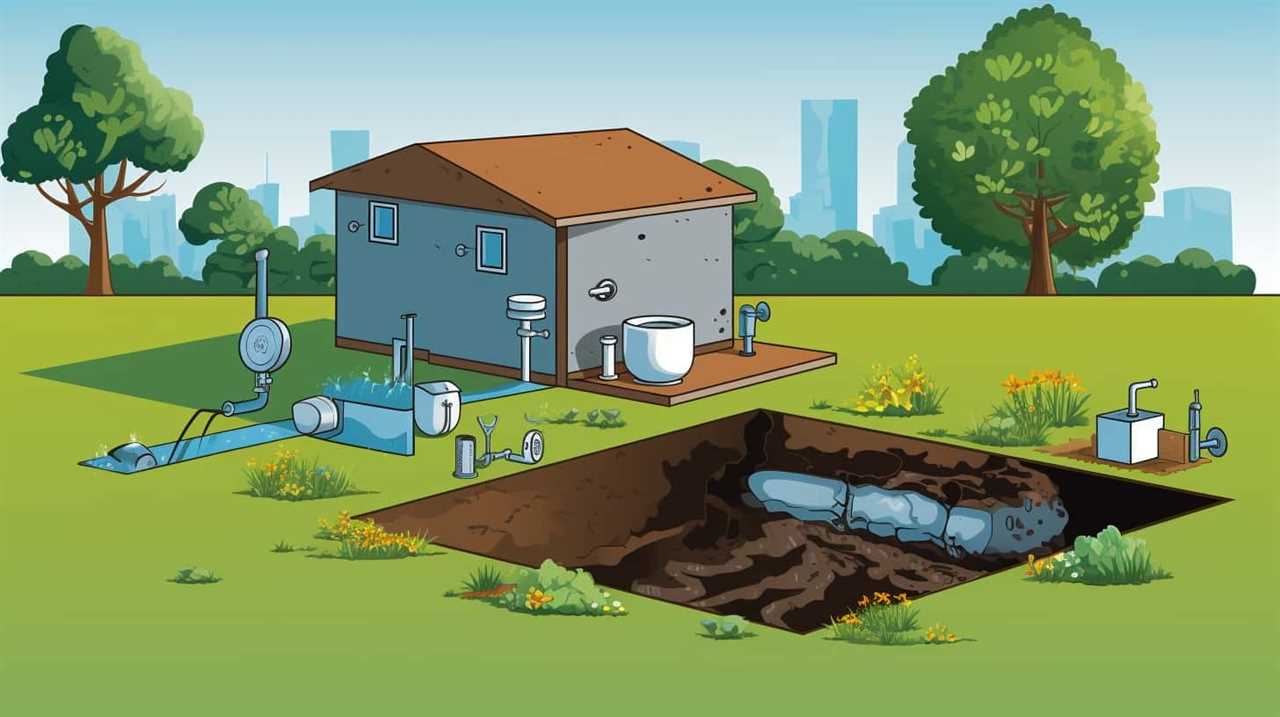
Here are some tips to prevent clogs and troubleshoot common issues:
- Use a plunger: A plunger is an effective tool for force flushing a toilet. Ensure a tight seal around the drain and use vigorous up-and-down motions to create suction and dislodge any blockage.
- Apply lubricant: If the plunger doesn’t work, try applying a small amount of lubricant, such as dish soap or petroleum jelly, around the rim of the plunger. This can improve suction and increase the chances of a successful force flush.
- Avoid excessive force: While force flushing is necessary in some cases, it’s important to avoid using excessive force as it can damage the toilet or pipes. Apply firm pressure, but be cautious.
- Check the water level: Before attempting a force flush, ensure that the water level in the toilet bowl isn’t too high. If it is, remove some water using a bucket or cup to prevent overflow.
- Call a professional: If force flushing doesn’t resolve the issue or if you encounter any other problems, it’s best to call a professional plumber. They have the expertise to handle complex toilet issues.
Frequently Asked Questions
How Long Does It Typically Take to Force Flush a Toilet?
Typically, it takes a few minutes to force flush a toilet. Common mistakes when trying to force flush include using excessive force, not checking the water level, or ignoring clogs. To troubleshoot a toilet that won’t force flush, check the water level, inspect for clogs, and ensure the flapper is functioning properly.
Can Force Flushing a Toilet Cause Any Damage to the Plumbing System?
Force flushing a toilet without proper knowledge or tools can potentially cause significant damage to the plumbing system. To prevent this, it’s crucial to understand the risks involved and take necessary precautions to ensure the integrity of the plumbing is maintained.
Is It Possible to Force Flush a Toilet Without Using Any Tools or Equipment?
Yes, you can force flush a toilet without using any tools or equipment. Some natural methods for unclogging toilets include using hot water, vinegar and baking soda, or a plunger. These DIY solutions can help resolve toilet flushing issues.
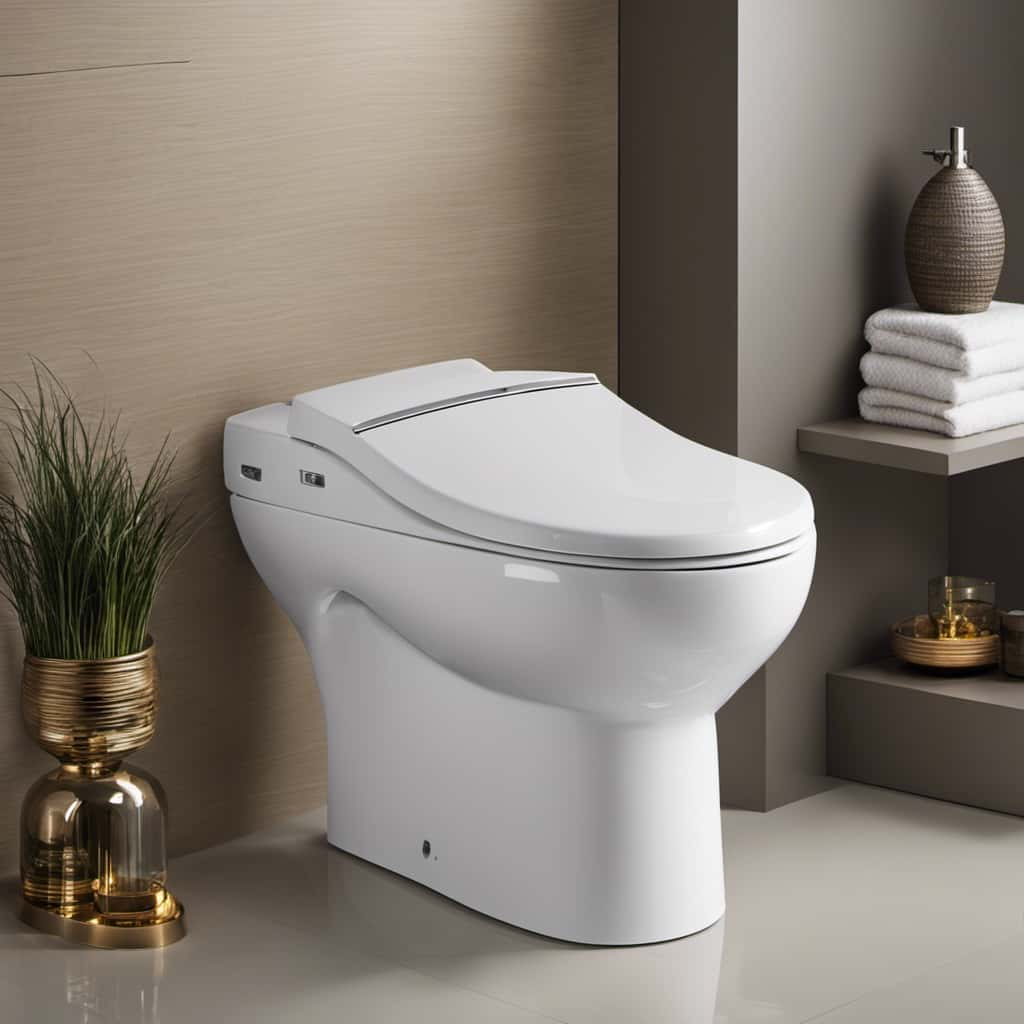
What Are Some Common Signs That Indicate a Force Flush Might Be Necessary?
Common signs that indicate a force flush might be necessary include water backing up, slow draining, and repeated clogs. To prevent clogs and avoid force flushing, proper maintenance and avoiding flushing non-flushable items are essential.
Are There Any Alternative Methods to Force Flushing a Toilet if the Recommended Tools Are Not Available?
Yes, there are alternative methods to force flush a toilet if the recommended tools are not available. DIY techniques such as pouring hot water or using a plunger can help resolve the issue.
Conclusion
In conclusion, understanding the mechanics of a toilet flush is essential for identifying when a force flush is necessary. By following a step-by-step guide and using the right tools and equipment, you can successfully force flush a toilet.
Remember to exercise caution and follow the tips provided for a smooth and efficient flush. With these techniques, you’ll be able to unclog even the most stubborn toilets with the force of a thousand storms!
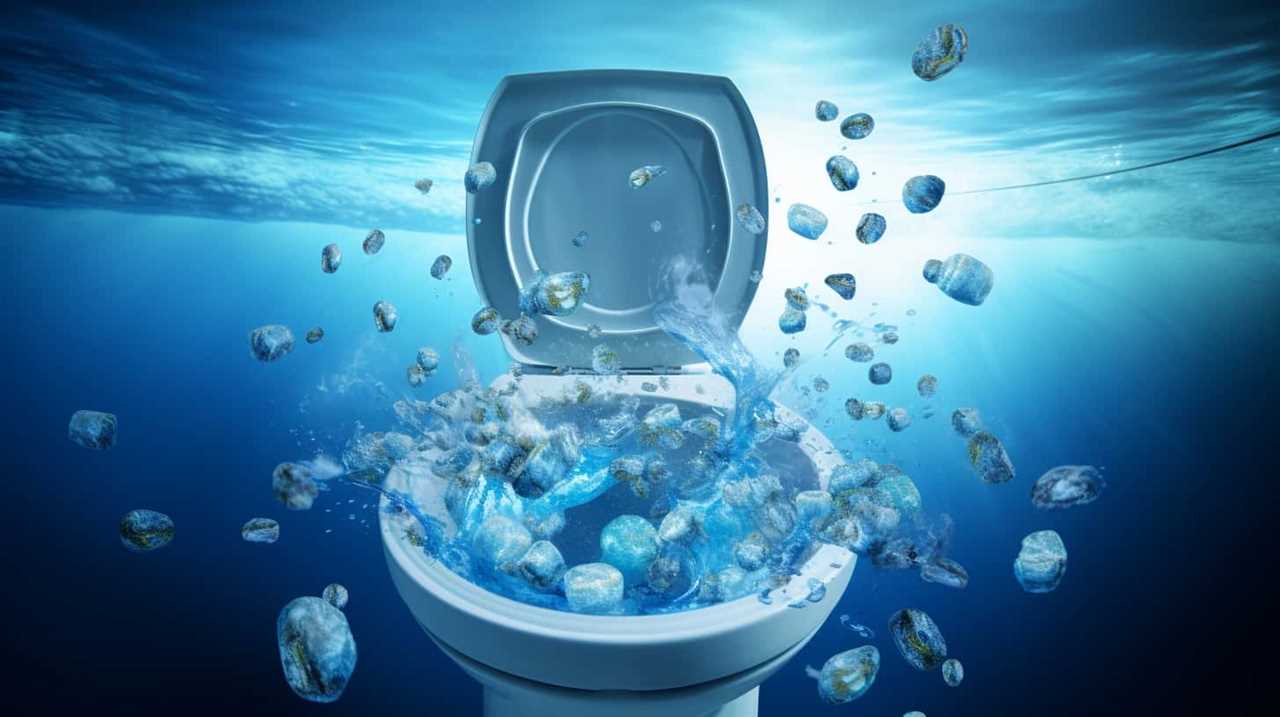
With an impeccable eye for detail and a passion for bathroom-related, Ava leads our editorial team gracefully and precisely.
Under her guidance, Best Modern Toilet has flourished as the go-to resource for modern bathroom enthusiasts. In her free time, you might find Ava exploring antique shops and looking for vintage bathroom fixtures to add to her collection.
FAQ - Advanced Bathroom Queries
Why Can’t You Flush Toilet Roll in Greece

Curious as to why toilet paper cannot be flushed in Greece? Allow us to provide some insight.
The plumbing infrastructure in Greece, although modern, is not designed to handle the disposal of toilet paper. Flushing it can lead to clogs and damage to the sewage system.
But don’t worry, we’ve got you covered. In this article, we’ll explore the reasons behind this practice, its environmental impact, and the alternatives commonly used in Greece.
Get ready to dive into the fascinating world of Greek toilet paper etiquette!
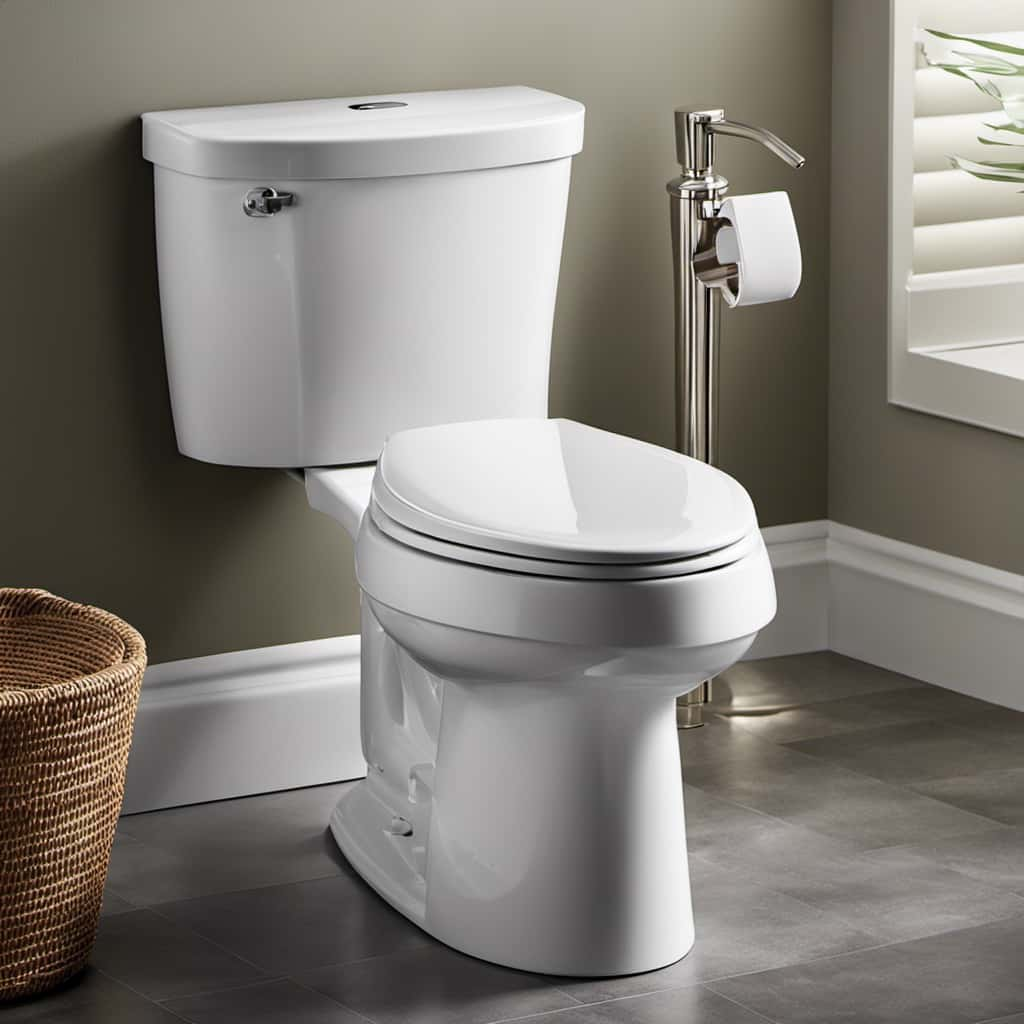
Key Takeaways
- Modern plumbing infrastructure in Greece is not designed to handle the disposal of toilet paper.
- Flushing toilet paper can lead to clogs and damage to the sewage system.
- Greece relies heavily on septic tanks, which have limited capacity to handle non-biodegradable materials like toilet paper.
- Aging infrastructure, limited capacity, and lack of maintenance contribute to the challenges in maintaining sewage systems in Greece.
Plumbing Infrastructure in Greece
Why is the plumbing infrastructure in Greece unable to handle flushing toilet paper?
Well, it all comes down to septic tank limitations and plumbing regulations.
Greece has a unique sewage system design that relies heavily on septic tanks. These tanks are designed to handle organic waste, such as human waste and toilet paper. However, they’ve limited capacity and aren’t equipped to handle large amounts of non-biodegradable materials like toilet paper.
To prevent clogging and potential damage to the system, it’s necessary to dispose of toilet paper in a separate bin provided in most restrooms. This may seem inconvenient, especially for those accustomed to simply flushing it down the toilet. However, it’s a necessary precaution to ensure the proper functioning of Greece’s plumbing infrastructure and sewage system design.
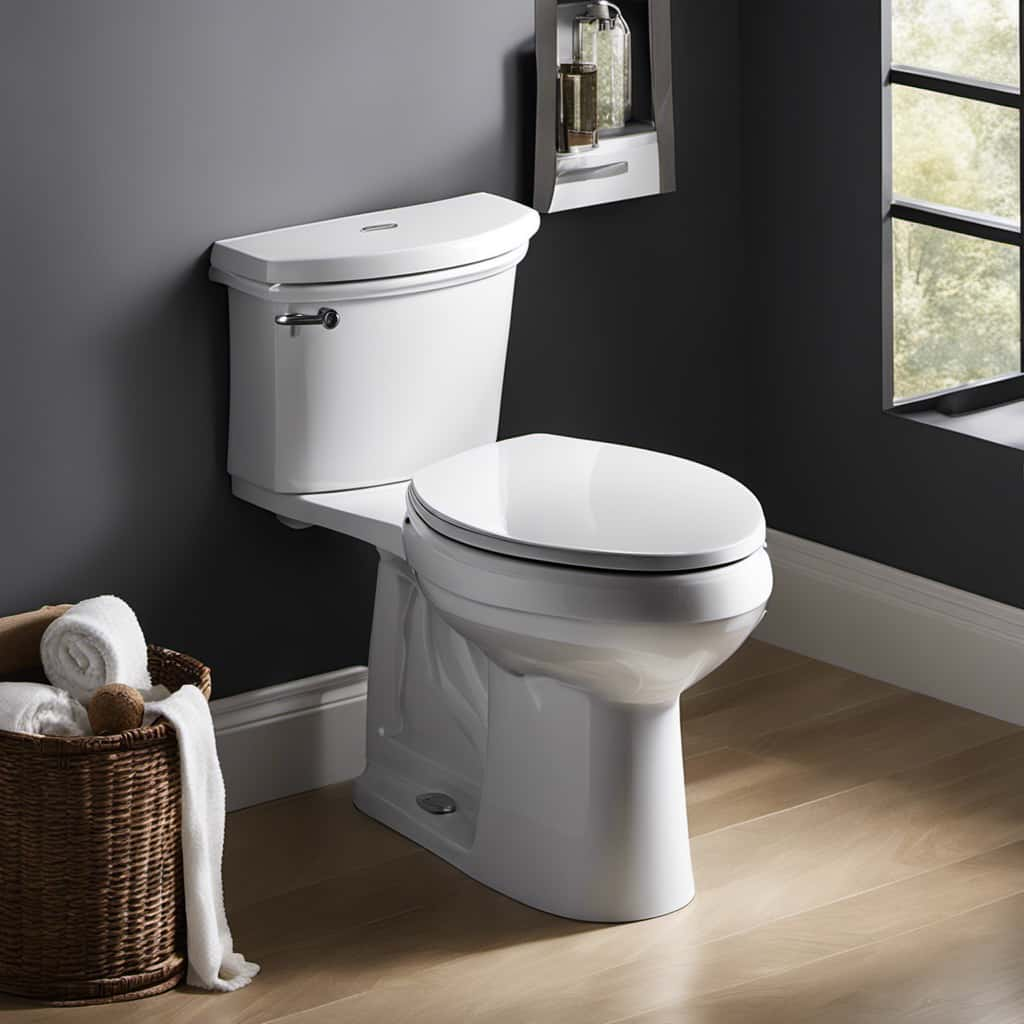
Now, let’s delve into the specifics of this unique sewage system design in Greece.
Sewage System Design in Greece
To understand the sewage system design in Greece and its limitations on flushing toilet paper, let’s delve into the unique infrastructure that relies on septic tanks and their capacity to handle non-biodegradable materials.
In Greece, municipal waste management is a significant challenge, and this extends to the sewage systems. Here are some key factors that contribute to the challenges in maintaining sewage systems in Greece:
- Aging infrastructure: Many sewage systems in Greece were built decades ago and haven’t been adequately updated or expanded to keep up with the growing population and increased waste production.
- Limited capacity: The septic tanks used in Greece have limited capacity to handle non-biodegradable materials like toilet paper, leading to frequent blockages and malfunctions.
- Lack of proper maintenance: Due to budget constraints and other priorities, the maintenance of sewage systems is often neglected, exacerbating the problems.
Understanding these challenges is crucial in comprehending the environmental impact of flushing toilet paper in Greece and finding sustainable solutions.

Environmental Impact of Flushing Toilet Paper
As we delve into the environmental impact of flushing toilet paper in Greece, it’s important to consider the consequences of disposing non-biodegradable materials into the aging sewage systems. The improper disposal of toilet paper can have detrimental effects on the environment. Flushing toilet paper contributes to paper waste management issues, as it adds to the volume of waste that needs to be treated and processed. This can put a strain on the already burdened sewage systems in Greece.
Additionally, excessive water usage from flushing toilet paper can conflict with water conservation measures that are in place to address water scarcity issues in the country. Therefore, it’s crucial to explore alternative methods of disposing of toilet paper to mitigate these environmental concerns.
Now, let’s transition into discussing the common alternatives to flushing toilet paper in Greece.
Common Alternatives to Flushing Toilet Paper in Greece
Now that we’ve explored the environmental impact of flushing toilet paper in Greece, let’s delve into the common alternatives we can use to avoid flushing it.

In Greece, bidet usage is a popular alternative to flushing toilet paper. Bidets are bathroom fixtures that spray water to clean oneself after using the toilet. They’re effective in removing waste without the need for toilet paper.
Another alternative is the use of composting toilets. These toilets are designed to convert human waste into compost that can be safely used as fertilizer. They use natural processes to break down waste, eliminating the need for flushing or traditional sewage systems.
Both bidet usage and composting toilets offer sustainable and hygienic alternatives to flushing toilet paper in Greece.
Cultural Norms and Etiquette Around Toilet Paper in Greece
In Greece, our cultural norms and etiquette dictate proper disposal methods for toilet paper. Unlike in many other countries, it isn’t common practice to flush toilet paper down the toilet. Instead, we’ve specific customs for disposing of it. This may seem strange to outsiders, but there are historical reasons behind this tradition.
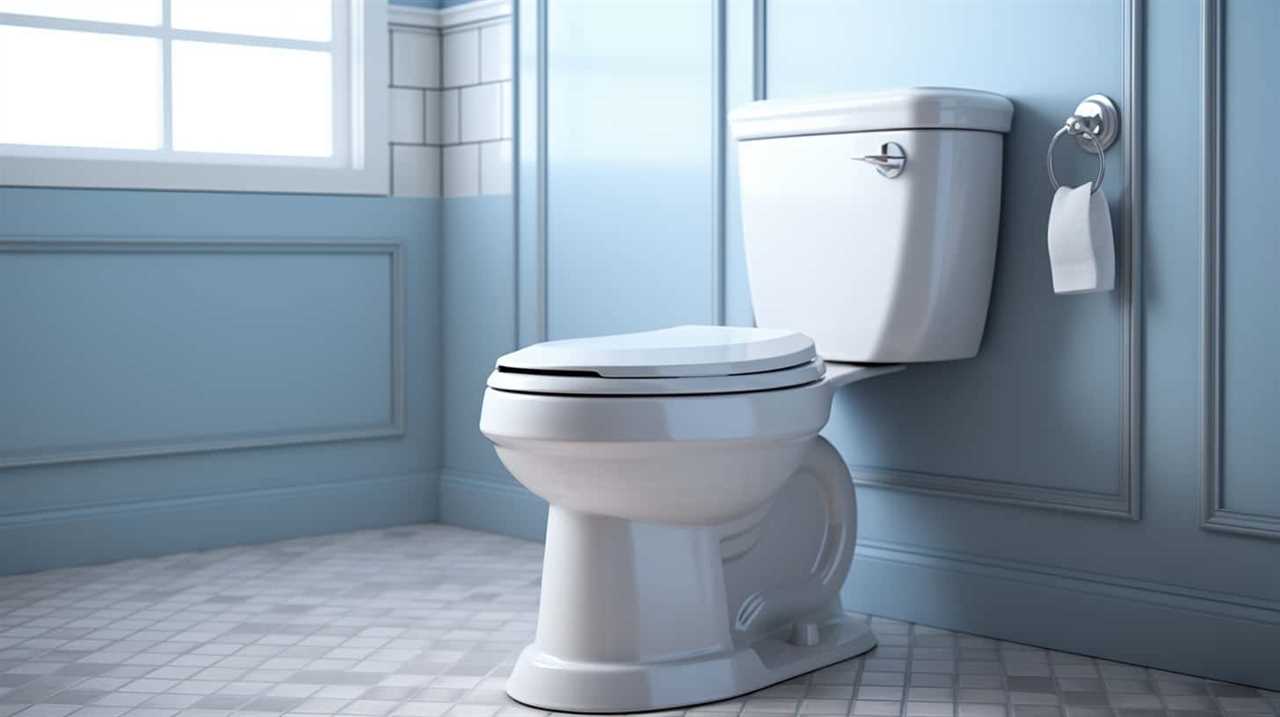
One of the main reasons for not flushing toilet paper in Greece is the age and condition of our plumbing systems. Many older buildings and houses have outdated pipes that aren’t designed to handle the flushing of toilet paper. Flushing it can lead to blockages and costly repairs.
Another reason is the concern for environmental impact. By not flushing toilet paper, we reduce the amount of waste that goes into the sewage system. This helps to protect our natural resources and minimize pollution.
Conclusion
In conclusion, when it comes to flushing toilet paper in Greece, it’s important to be mindful of the plumbing infrastructure and environmental impact. While it may not be the norm to flush toilet paper in Greece, there are alternative options available.
Understanding the cultural norms and etiquette around toilet paper can help us navigate this aspect of daily life in Greece with ease and respect. So, let’s embrace the unique customs and practices that make Greece truly special.

With an impeccable eye for detail and a passion for bathroom-related, Ava leads our editorial team gracefully and precisely.
Under her guidance, Best Modern Toilet has flourished as the go-to resource for modern bathroom enthusiasts. In her free time, you might find Ava exploring antique shops and looking for vintage bathroom fixtures to add to her collection.
-

 FAQ - Advanced Bathroom Queries3 months ago
FAQ - Advanced Bathroom Queries3 months agoWhat Happens if You Sit on the Toilet Too Long
-

 FAQ - Advanced Bathroom Queries3 months ago
FAQ - Advanced Bathroom Queries3 months agoWhy Is My Toilet so Loud When Refilling
-

 Guides3 months ago
Guides3 months agoTroubleshooting Dropping Water Level in Toilet Bowl: Causes and Solutions
-

 Guides3 months ago
Guides3 months agoToilet Water Supply Line Sizes: Finding the Right Fit
-

 Guides3 months ago
Guides3 months agoChoosing the Right Toilet Flange: A Comprehensive Guide
-

 FAQ - Advanced Bathroom Queries3 months ago
FAQ - Advanced Bathroom Queries3 months agoWhat Happens When You Put Baking Soda in Your Toilet
-

 Guides3 months ago
Guides3 months agoHow to Remove Crystallized Urine From Toilet Bowl
-

 Guides3 months ago
Guides3 months agoHow to Use Green Gobbler in Toilet





















